Today, we took our largest group on the hiking trails of Guam. There were 23 people who came with us to Tarzan Swim Hole. We wanted to go somewhere easy to get to and had water to cool off in.
Here’s the group by the water. As you can see, the main attraction was the rope swing.
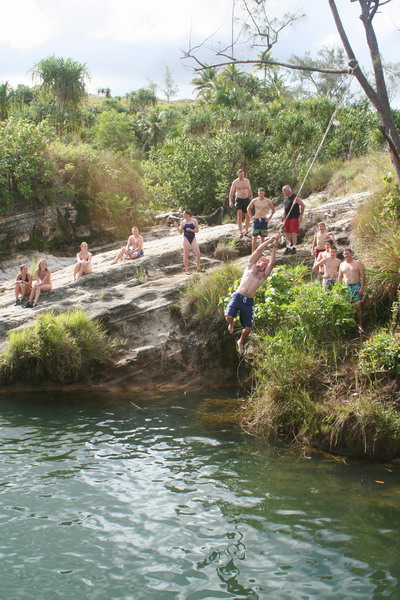
Unfortunately, this year’s wet season has been fairly dry (thus far at least) and the water level was about 3 feet lower than last time we were there.
This is our friend Gordon going into the water. As you can see, he made sure to point his fingers and toes before he hit the water…
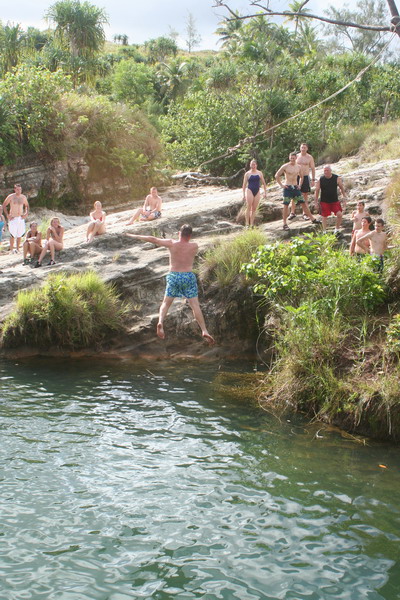
This is Andy’s father (his mother and sister were also hiking with us) who had no fear going off the rope swing.
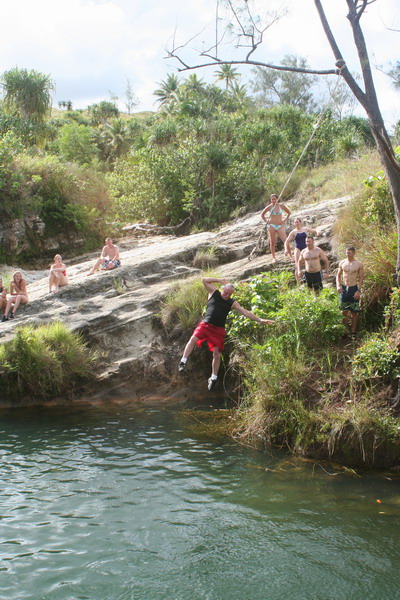
There are six Air Force Academy cadets who are on Andersen for a few weeks to learn about the Air Force. Here is a picture of most of them (all except Rodney in the middle are cadets).
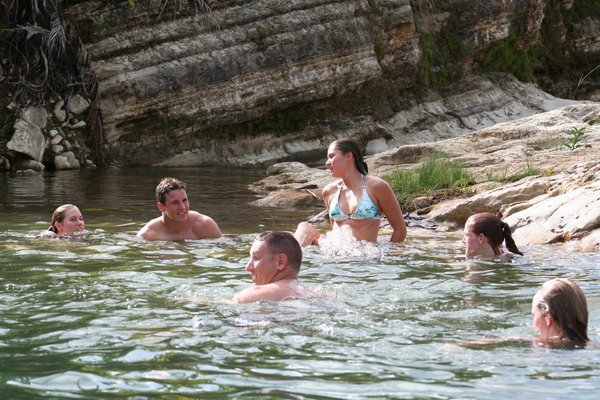
Here’s Lindsey enjoying the ride on the swing.
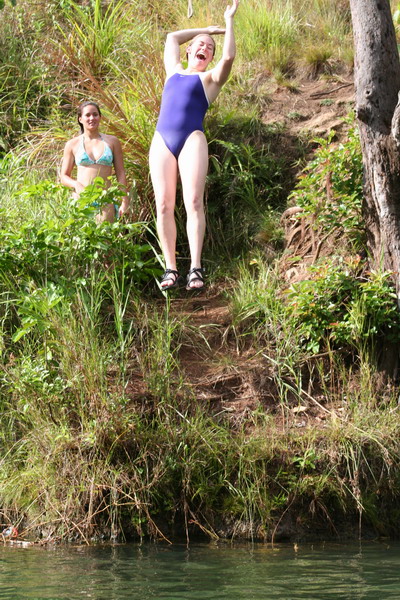
Still smiling as she hits the water.
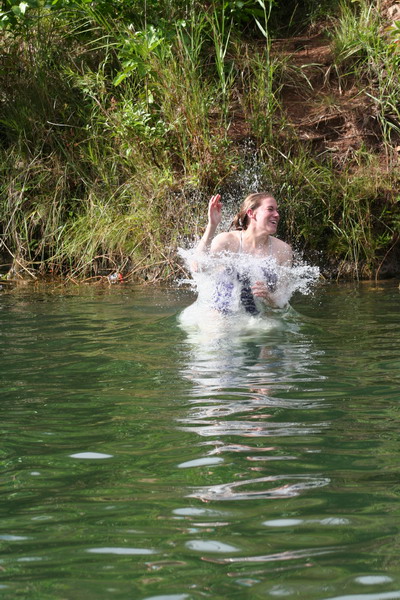
Gordon is apparently more interested in watching the rope than the girl about to face plant in the water. 🙂
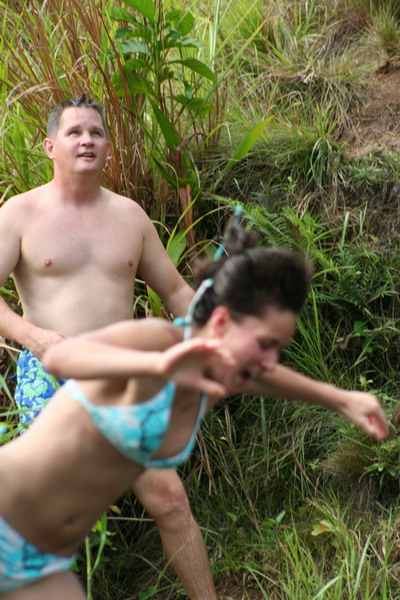
Here’s Gordon, still pointing those fingers and toes…
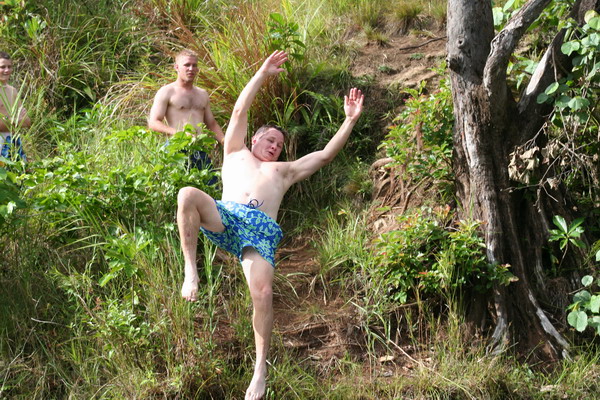
Jen makes sure she can see where she’s going, while Andy watches attentively from the shore.
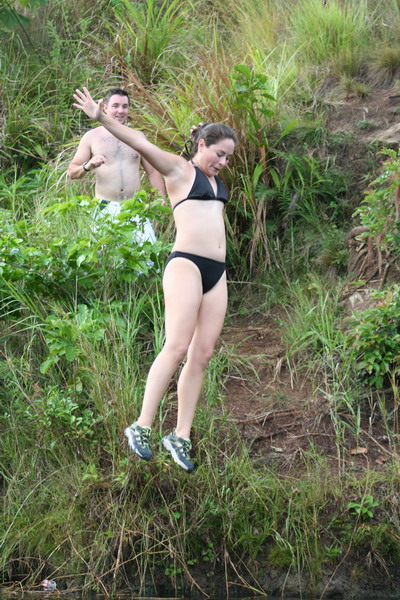
Rodney concentrates soo hard holding on to the rope, he grimaces…
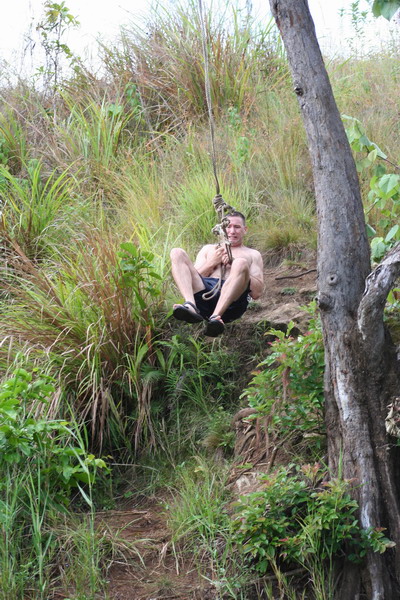
Jamie had without a doubt the most athletic water entry. He did a flip off the rocks into the water.
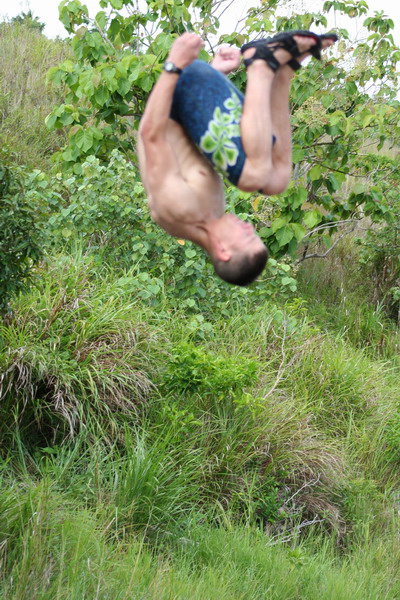
Once everyone enjoyed the water enough, we packed up and headed back up the hill and off to dinner for Guam’s best cheeseburgers at Jeff’s Pirates Cove.
Until the next adventure.
–Jim
Author: jim
Iwo Jima: 61 years later (2006)–Part 2
***Please read the entry Iwo Jima: 1945 and Part 1 first***
Perhaps the most poignant part of the whole trip was our time on Mt Suribachi. There is a memorial to both the American and Japanese forces on top.

Here is the American Memorial on the top of Mt Suribachi. From wverything I have seen and read about the battle. The inscription is VERY apropos.
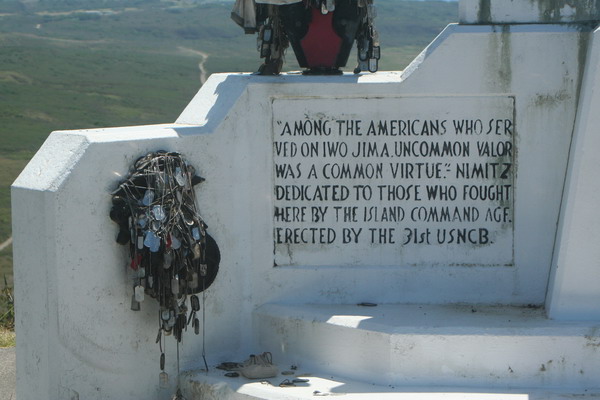
Here is the other side.
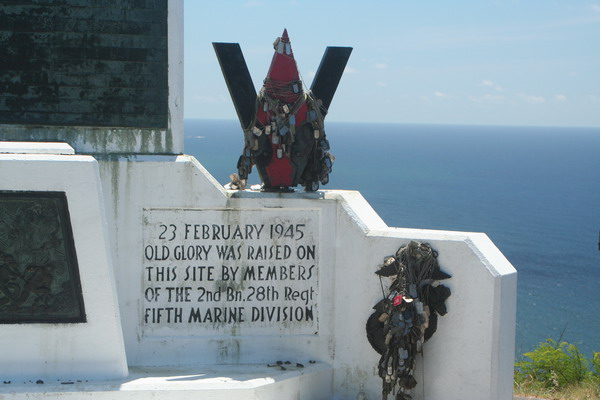
Many Marines (and other service members) have left tributes to those who have gone before. These dog tags are a very fitting tribute.
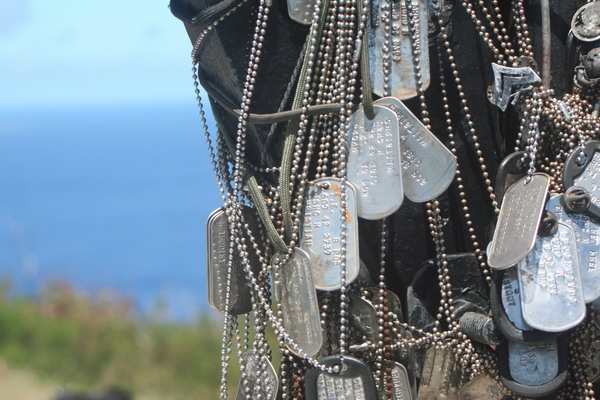
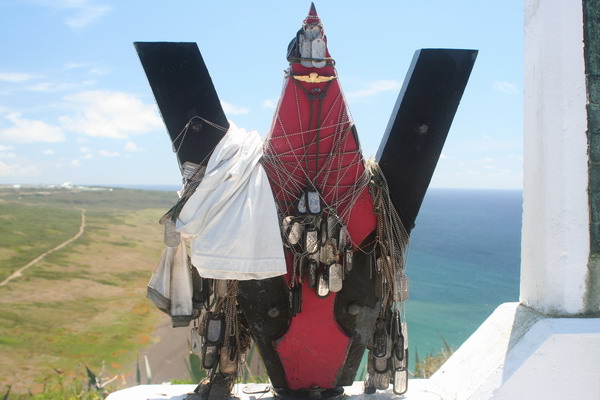
As you can see from this picture, everyone from a private to four
star general thought it appropriate to leave a bit of themselves behind on this small edifice.

An interesting story about the flag raising. Of course you know that there were two flag raisings on the summit of Mt Suribachi. The second (and famous) flag was raised by six people. Of that, three were killed soon after in action on Iwo Jima. Of the remaining three there is one person who actually raised both flags. In fact, he wasn’t even a Marine. He was a Navy Corpsmen. He was assigned as a hospitable corpsman to a Marine rifle company. His name is John Bradley and he’s from a little town in North-Central Wisconsin called Antigo. For his actions on Iwo Jima, he was awarded the Navy Cross (the second highest medal, after the Medal of Honor). Here is what the citation to accompany award reads:
“For extraordinary heroism in action against the enemy at Iwo Jima on Feb. 21, 1945 as a hospital corpsman attached to a Marine Rifle platoon. During a furious assault by his company upon a strongly defended enemy zone at the base of Mt. Suribachi, Bradley observed a Marine infantryman fall wounded in an open area under a pounding barrage by mortars, interlaced with a merciless crossfire from Machine guns.
“With complete disregard for his own safety, he ran through the intense fire to the side of the fallen Marine, examined his wounds and ascertained that an immediate administration of plasma was necessary to save the man’s life. Unwilling to subject any of his comrades to the danger to which he had so valiantly exposed himself, he signaled would-be assistants to remain where they were. Placing himself in a position to shield the wounded man, he tied a plasma unit to a rifle planted upright in the sand and continued his life saving mission.
The Marine’s wounds bandaged and the condition of shock relieved by plasma, Bradley pulled the man thirty yards through intense enemy fire to a position of safety. His indomitable spirit, dauntless initiative, and heroic devotion to duty were an inspiration to those with who he served and were in keeping with the highest tradition of the United States Naval Service.”
He survived the war (although injured in both legs a month after the invasion of Iwo Jima) and returned to put his life back together in Wisconsin. When he passed away in 1994, the following was written about him in an editorial in his hometown paper, “The Antigo Daily Journal”:
“John Bradley will be forever memorialized for a few moments action at the top of a remote Pacific mountain. We prefer to remember him for his life. If the famous flag-raising at Iwo Jima symbolized American patriotism and valor, Bradley’s quiet, modest nature and philanthropic efforts shine as an example of the best of small town American values.”
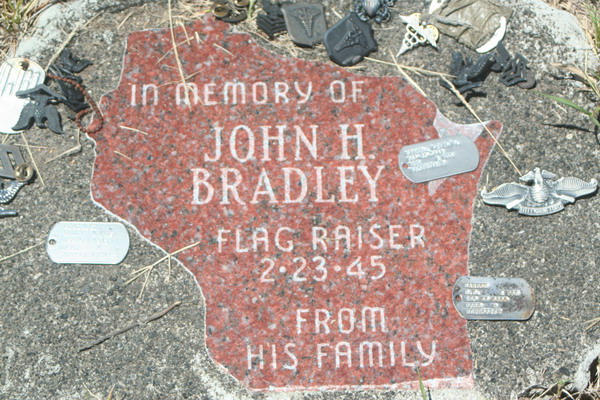
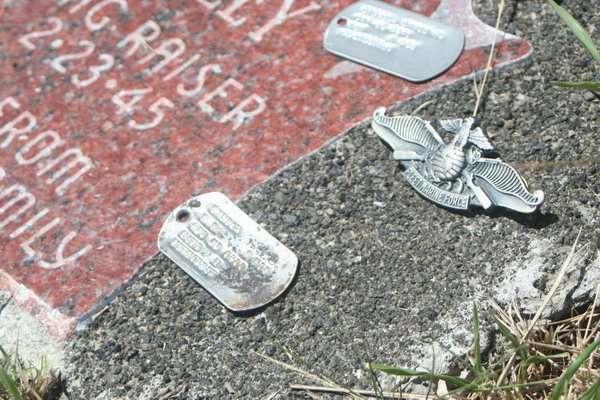
From the vantage point on the top of Mt Suribachi, it’s very plain to see how easy it was to wreak so much havoc on the American invaders. Here is what the invasion beach looks like:
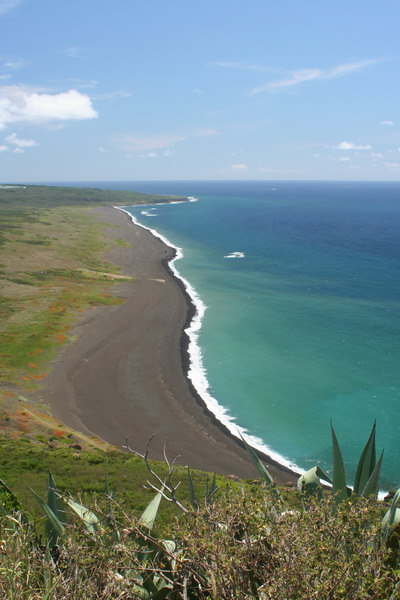
Here is the Japanese memorial to the island’s defenders.
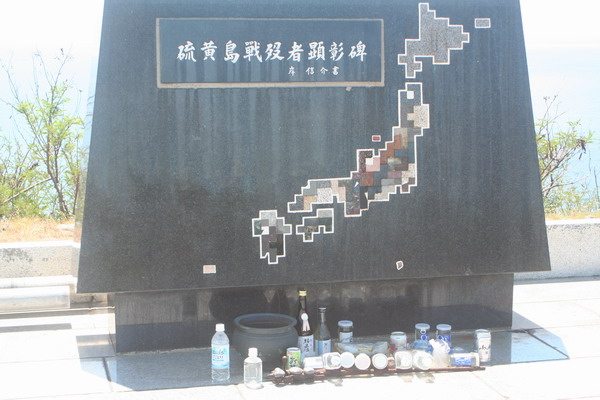
Yes, there are even some flowers there.
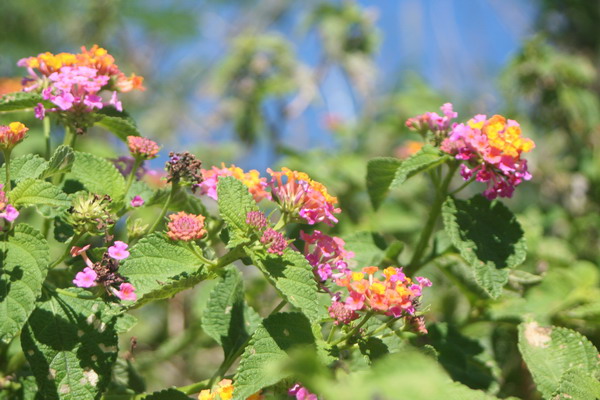
The group learning more about the history of the battle.
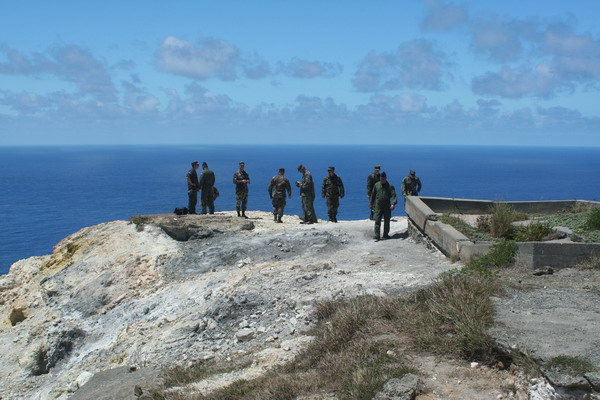
The volcano’s caldera.
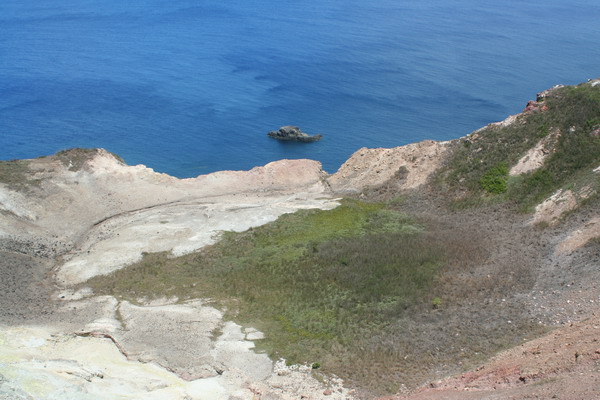
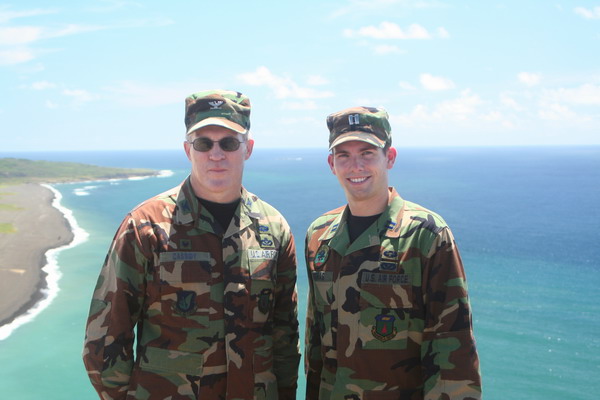
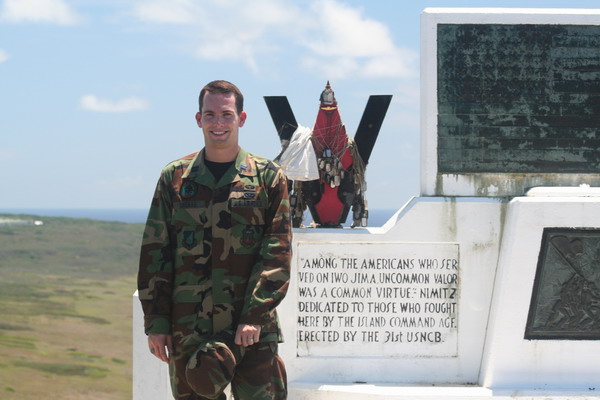
There are places where the wreckage from the invasion is still very visible. This is the alternate landing site for the invasion.
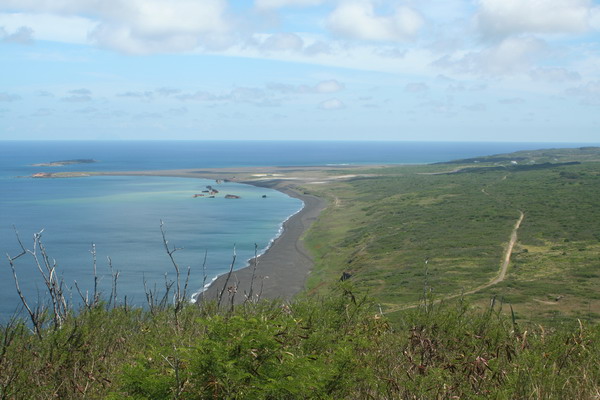
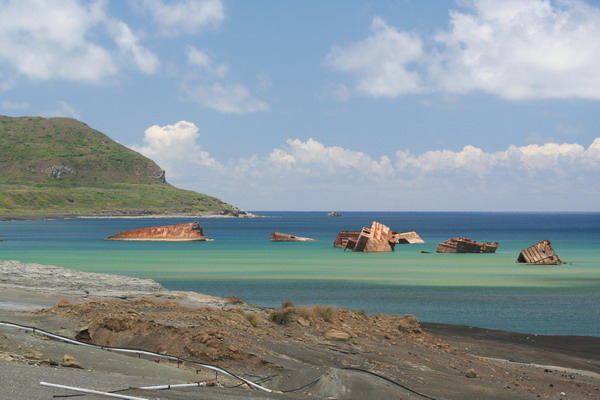
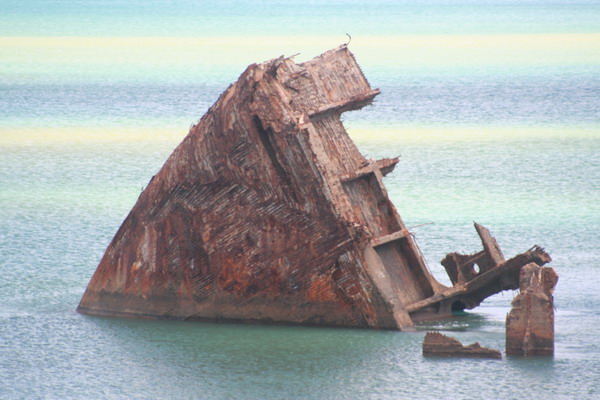
Before we left, I felt complelled to take this picture.
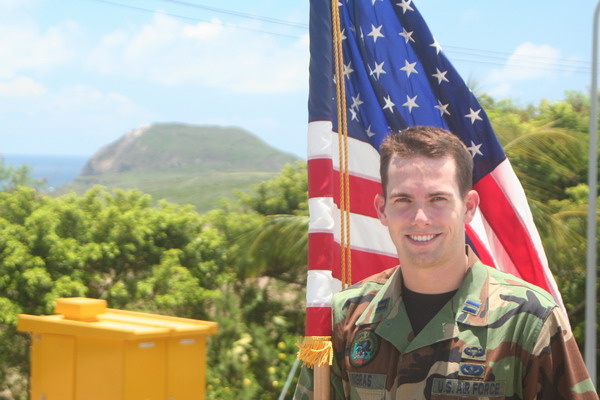
On our way back to Guam, we flew around the island twice and gave us a great perspective on the island we had just learned so much about.
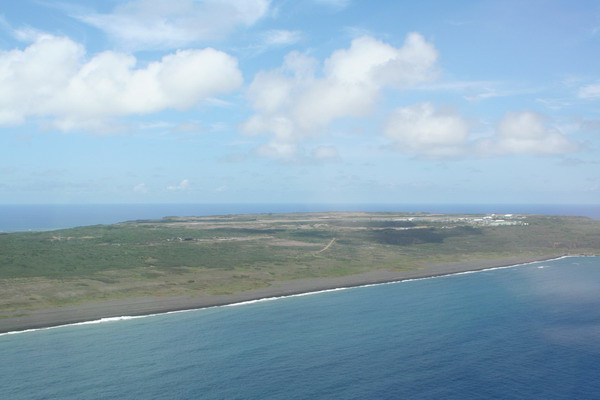
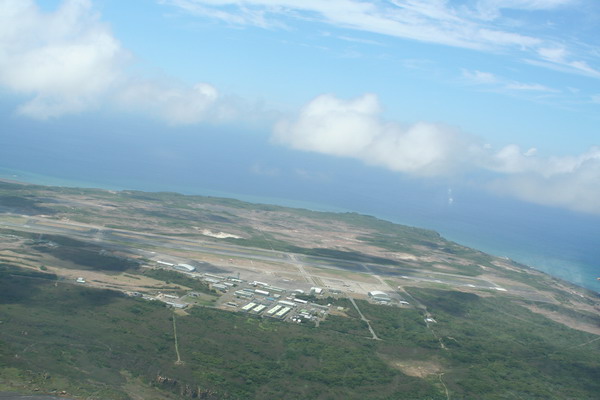
Mt Suribachi:
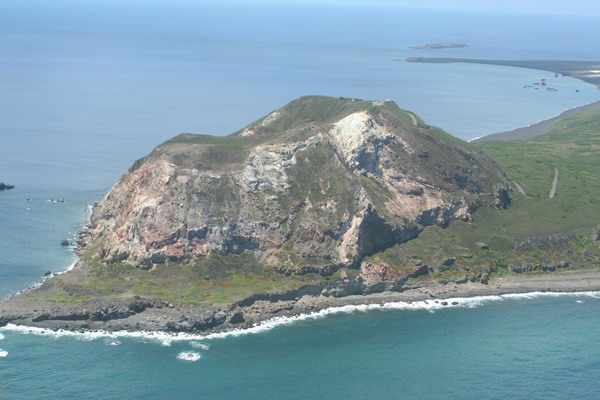
It’s one thing to read about Iwo Jima and its battle/implications. It is completely different to go and experience it for yourself. I can say this is one of the best pieces of my professional military education. I’m truly grateful for the opportunity to pay my respects to so many on both sides that gave the final measure of devotion.
–Jim
Iwo Jima: 61 years later (2006)–Part 1
***Please read the entry Iwo Jima: 1945 first***
Last week, I had the rare opportunity to visit a sleepy little island about halfway between Guam and Japan, called Iwo Jima. It was the site of a ferocious battle in World War II.
Here is how we got there and back, the venerable C-130 transport aircraft:
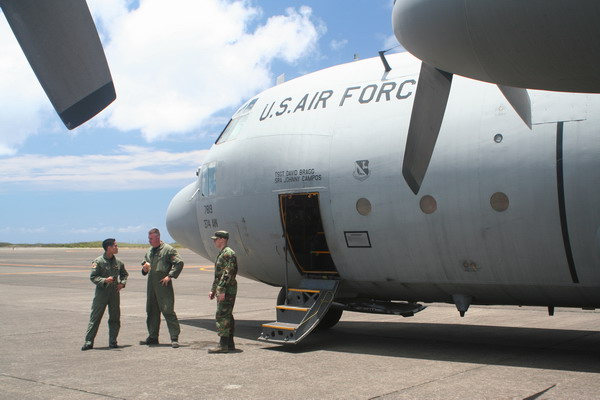
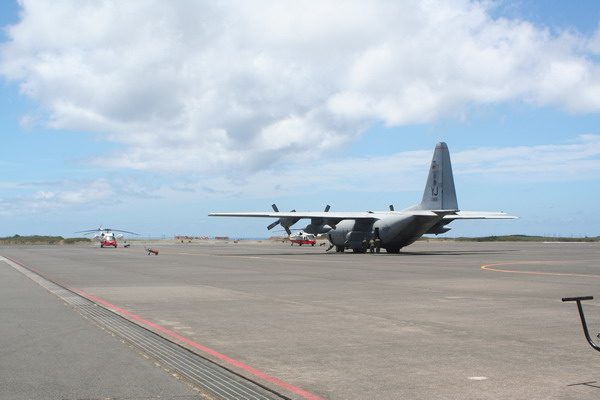
Here’s the inside. As you can see, it’s not quite as comfortable as a civilian airliner, and a whole lot louder. It sure can get into some remote places though!
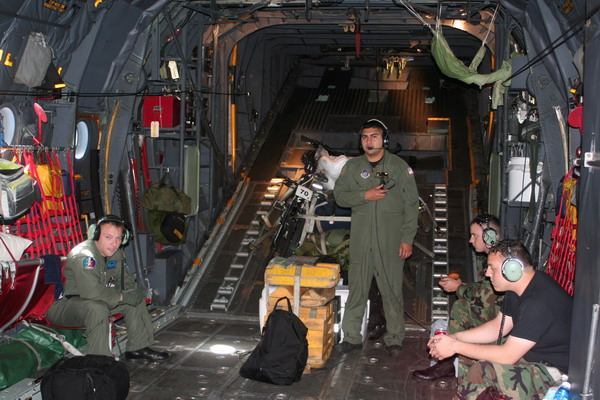
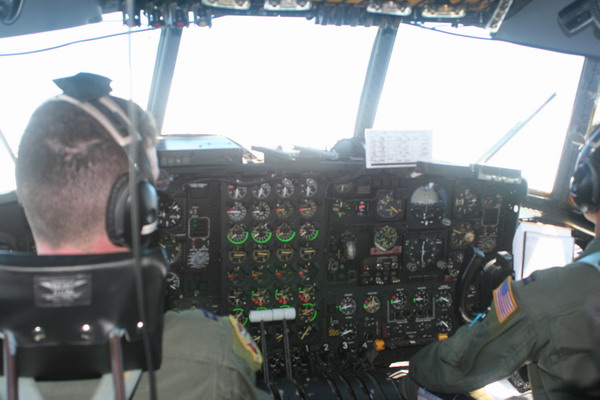
While we were only on the ground for a few hours, we were able to see much of the island by using a minibus to drive us around. About the only people on the island these days are the 200 or so Japanese Maritime Self-Defense Force. So, it is an interesting turn of fate that we had a Japanese and an American Marine (who flew out with us from Guam) to guide us through the historical significance of the island where so many people had died on just 6 decades before.
This is the dirt road that leads to the infamous Mt Suribachi.
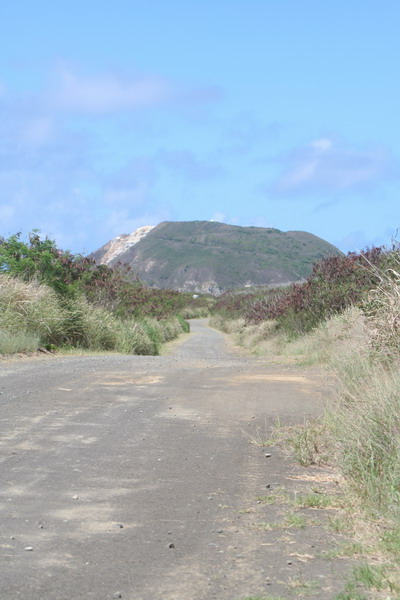
Here you can see on of the well entrenched bunkers that lined the shore where the Marines landed in February 1945.
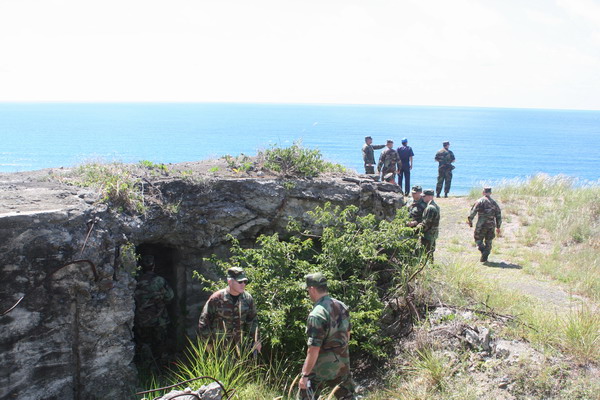
Here I am on the inside of that bunker (or pillbox).
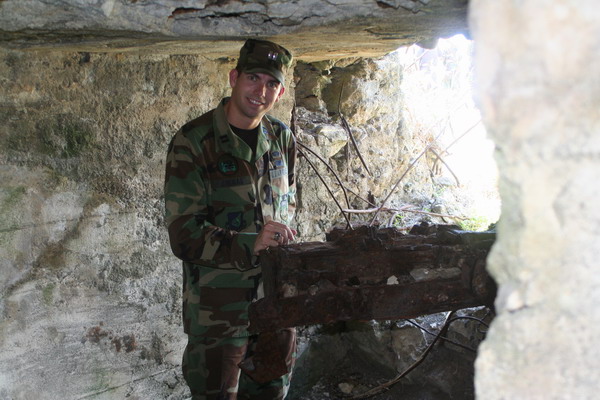
The Commander and Command Chief Master Sergeant.
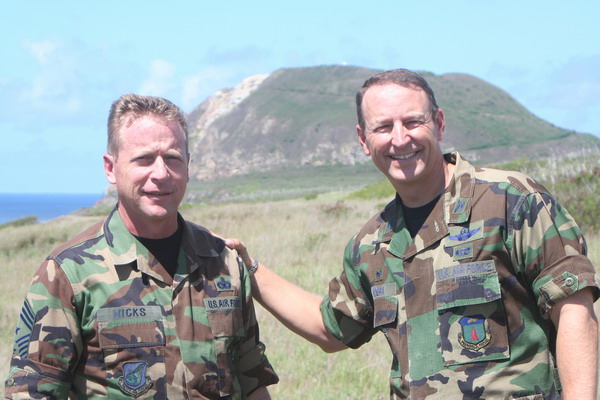
This is our group of Air Force people who attended.
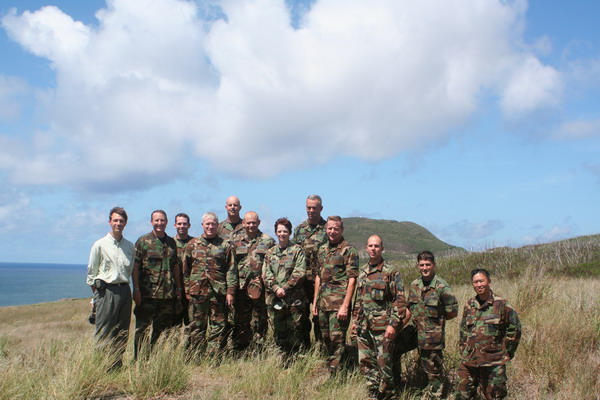
This monument is was dedicated when both Japanese and American soldiers met at this spot. This time it was under the banner of peace and friendship.
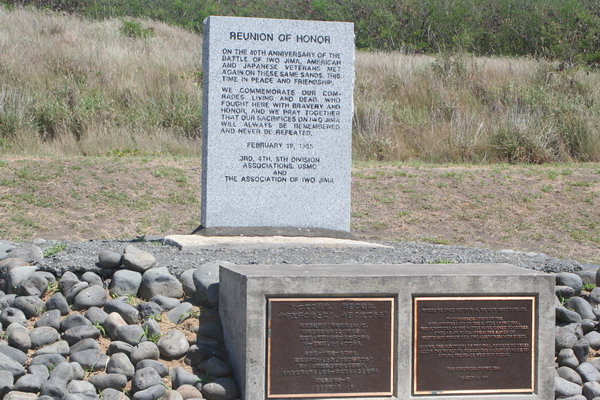
This map shows how the island looked during WWII and where the Marine units involved went. To orient you, Mt Suribachi is in the lower left hand corner (on the southernmost end of the island).
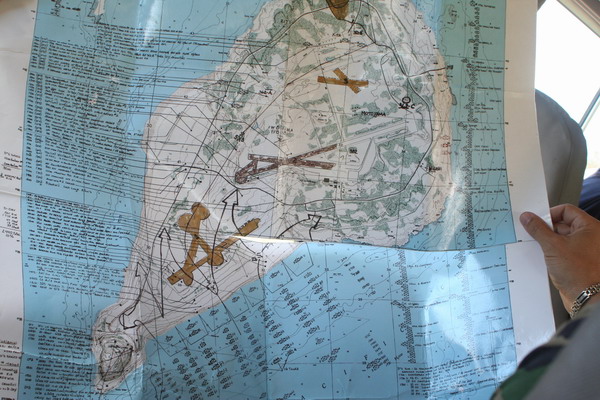
This is the invasion beach. You can see it’s a black volcanic beach. The sand is coarse and it’s very easy to imagine how hard it was to land all those men and equipment.
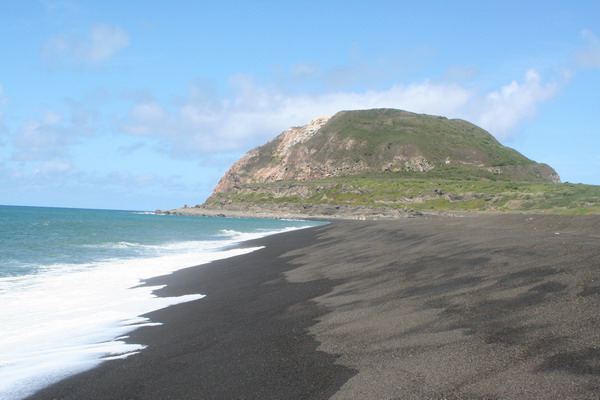
This rock marks the midway point on the beach and divided where the regiments came ashore.
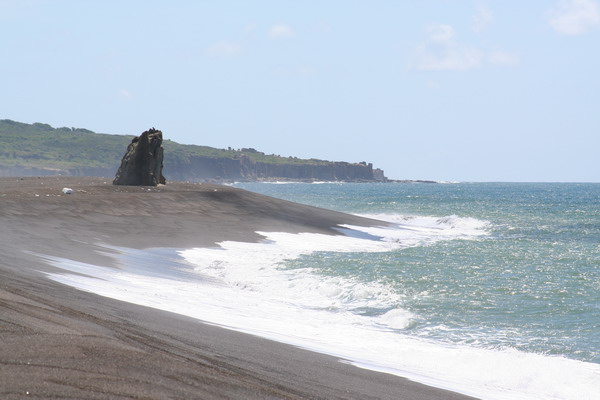
This is our Marine guide, Matt, recounting what happened 61 years ago.
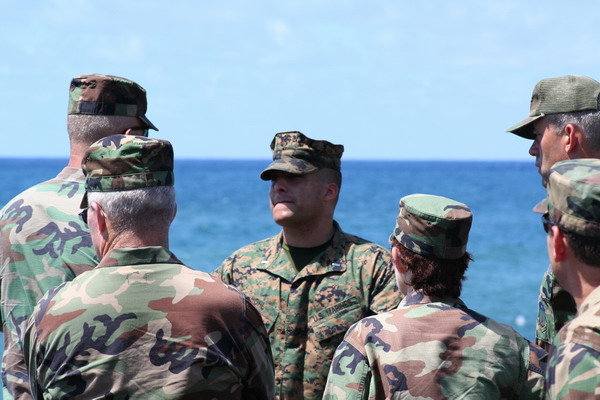
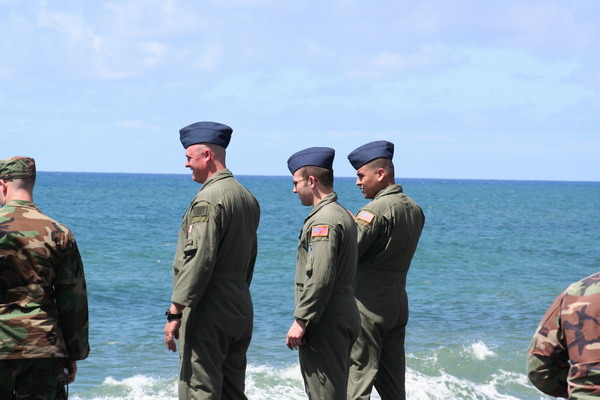
During the war, everything the Japanese defenders did was underground. This included their hospital. Almost a month after the island was declared captured, American forces discovered an underground field hospital. It contained 72 Japanese soldiers and medical personnel. 71 of them surrendered (one committeed suicide).
Here is the entrance to that hospital cave:
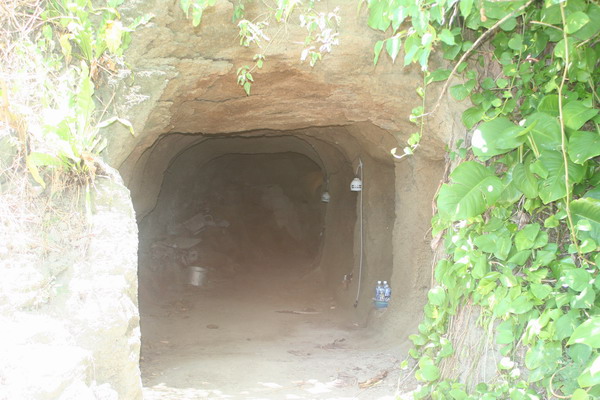
There were a number of artifacts that remained in the cave.
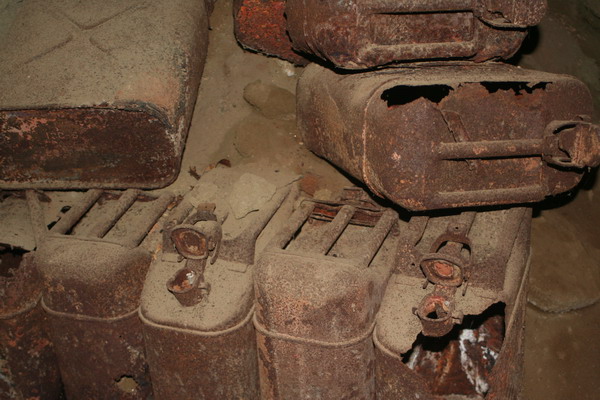
Inside the cave, there were a number of air vents that provided fresh air. That was especially important if one of the entrances were destroyed or blocked.
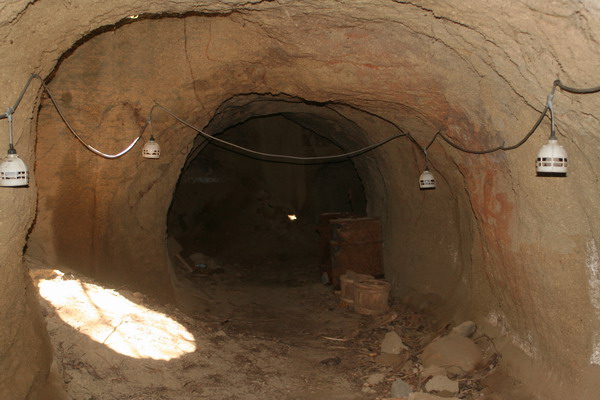
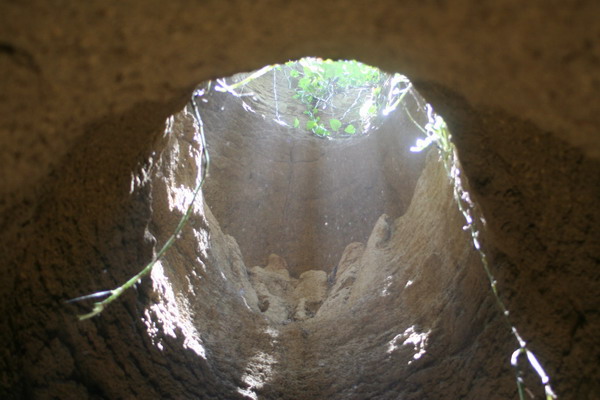
One aspect of the cave that the pictures don’t convey is just how hot it was inside. One would expect that it would be much cooler underground. However, since the island is an active volcano, going underground only brings you closer to the steam and magma. So, in places it was easily over 100 degrees. This picture shows the mass of hot air rising from the cave into the cooler air above and outside.
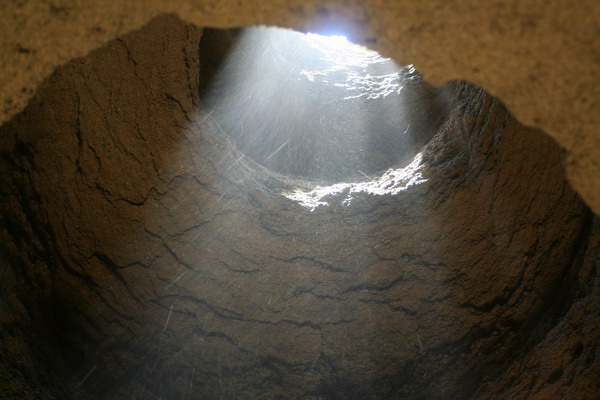
Nearby the hospital cave, there is a sandstone monument carved into the cliff. This carving of the famous flag raising on Mt Suribachi was done by Waldon Rich in July 1945 (only 5 months after the actual raising).
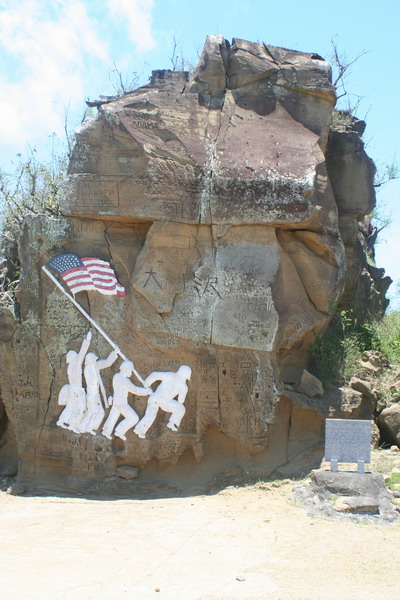
In the next part, I will include the pictures from the top of Mt Suribachi.
–Jim
Iwo Jima: 1945
Iwo Jima.
This is probably the image that comes to your mind when you think of that small island in the middle of the Pacific Ocean:
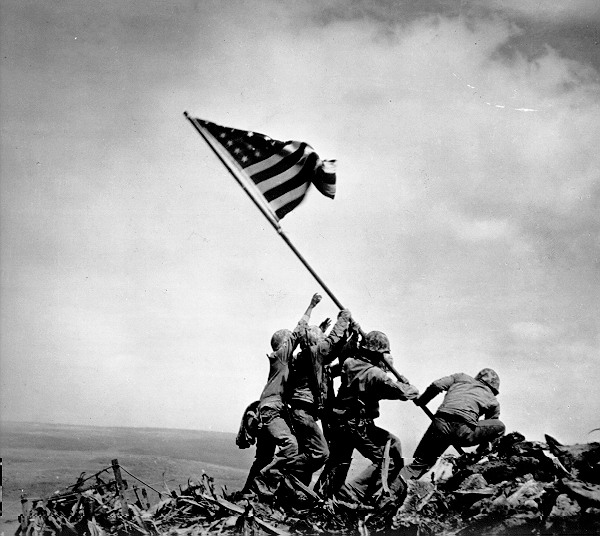
Now, imagine this (the rest of the story):
The date was 18 February 1945, D-Day to capture the critical island of Iwo Jima. This was the next island in line for the “island hopping” campaign for the United States in the Pacific Theater of Operations during World War II. There had already been three days of constant naval and aerial bombardment to “soften” the defenses of the island of Iwo Jima.
These assaults barely scratched the surface.
The invasion force was 70,647 US Marines. They faced 21,000 Japanese forces well entrenched in an intricate network of underground tunnels. The invasion force included a total of 250,000 US forces. They were carried on one of the largest armadas ever assembled, which included more than 800 vessels (12 aircraft carriers, 8 battleships and a host of other support vessels).
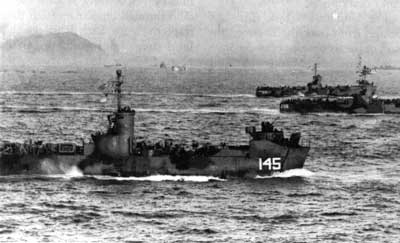
There was a 2 mile stretch of beach that was the only viable landing location. The American planners knew that and the Japanese defenders knew that. So, those 70,000 Marines came in to an area that was incredibly well defended and further complicated by soft, black volcanic beaches. So, the first wave got bogged down as they came ashore, then 5 minutes later another group was right on their heels, and another after that, and another, and so on. However, for the first hour, the Marines only encountered relatively light resistance. This is not what they were expecting. Once the beach had become congested though, the Japanese defenders opened up and decimated the men and equipment on the beach while remaining seemingly invisible from their underground or concealed emplacements. A book (Iwo Jima: Legacy of Valor) by Bill Ross described it as, “mortars fell cascades from hundreds of concealed pits. Heavy artillery and rapid-firing antiaircraft guns, barrels lowered to rake the beaches, slammed shells into oncoming landing craft and support vessels. Land mines sown like wheat in a field, exploded in sickening blasts as Marines stumbled across them. Fifteen inch guns and large mortars rained down from Suribachi’s base, slopes and crater … 6,200 men were down on the 3,000-yard strip of land.”
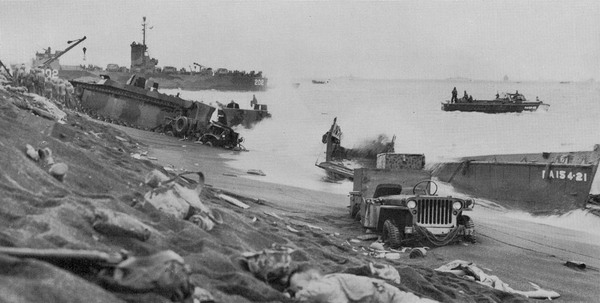
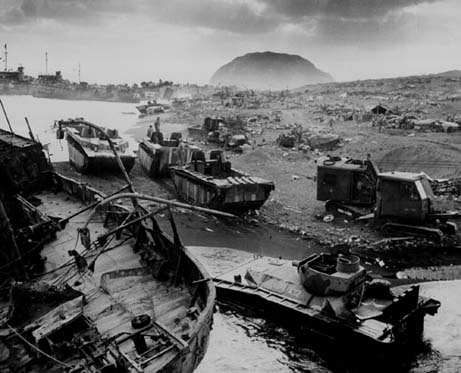
Eventually, the Marines broke free and began to advance inland in force.
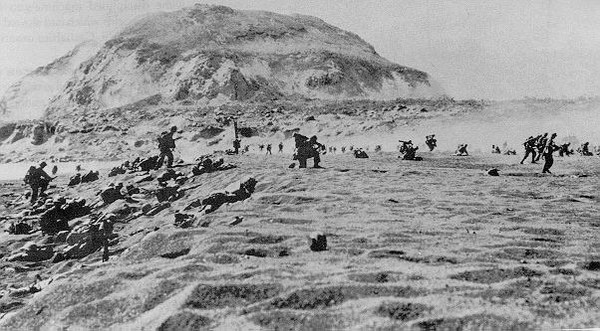
Although the island is less than 8 square miles, it has a formidable natural fortress in the form of Mount Suribachi (A suribachi is a kind of rough grinding bowl. Apparently the mountain’s shape was reminiscent of a suribachi to the Japanese who named it) on the extreme southern end of the island.
On the third day of fighting on Iwo Jima (D+2), the Marines launched their coordinated attack on Mt Suribachi. However, in some places they only advanced 50 yards that day.
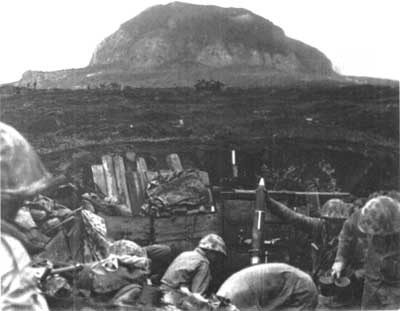
D+3 brought much of the same. There was no room for the supporting tanks and artillery to maneuver and the battle lines were so close that air support was ineffective. The battle raged with the marines fighting above ground and the Japanese fighting below. Many times, the US forces would never see their adversary as they were so well hidden. The most effective tactic was to use flame throwers and hand grenades.
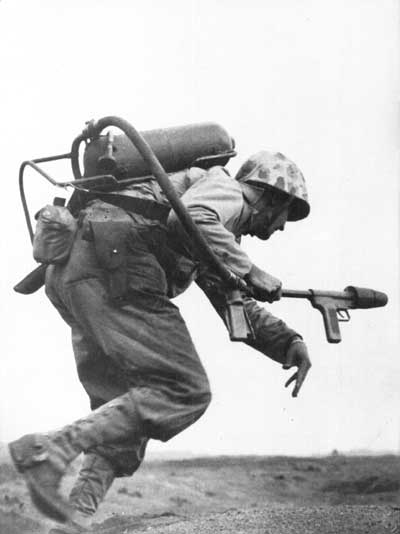

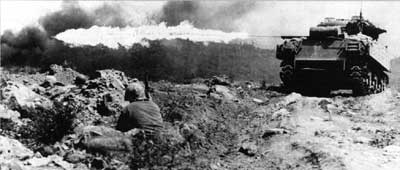
Finally on D+4 (24 February 1945), a forty man patrol was sent out and moved up the northern slopes toward the summit. They engaged a number of Japanese soldiers who attacked with hand grenades, but at 10:30 AM, the stars and stripes were raised on a length of pipe.
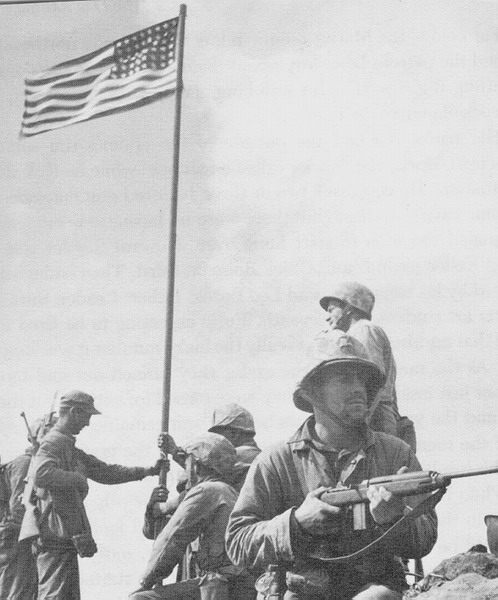
Photographer Lou Lowery captured this first flag raising on Iwo Jima on film. The shout went out throughout the southern part of the island “the flag is up!” and the troops cheered while the naval vessels sounded their siren. Around noon, the small flag first raised was replaced by a much larger one. These flag raisers are the ones that photographer Joe Rosenthal forever immortalized in his famous picture. This has become one of the most recognized pictures of the whole war. When asked 10 years later about the picture, he commented. “what difference does it make who took the picture, I took it, but the Marines took Iwo Jima.”
Here is a picture shortly after Old Glory was raised:

While the Marines were justifiably happy, the battle was far from over. The final “organized” attack occurred on 26 March 1945 (36 days after fighting began). 262 Japanese and 53 Americans were killed and at 0800, the island was declared captured.
This, over an island that is 5 miles long and averages only a mile and a half wide. The casualties were almost unbelievable. There were almost 7,000 American killed in the capture of Iwo Jima (of that 6,000 were Marines). Of the 21,000 Japanese defenders, 20,000 were killed and 1,083 were taken prisoner. There were 22 Medals of Honor awarded to Marines and 27 total were awarded, although 13 were posthumous (this is more than 25% of Marine Medals of Honor in all of WWII). The strategic value of the island is significant. Since the island is about halfway between the Marianas Islands and mainland Japan, it was an effective divert base for the many heavy bombers attacking Japan and a base for the shorter range fighters to escort the bombers. By the end of the war, more than 2,400 emergency landings were made at Iwo Jima. That meant that 27,000 men in those B-29s didn’t have to ditch their planes at sea (or worse) and prompted US Navy Admiral Ernest King to state that the lives saved “exceeded lives lost in the capture of the island itself.”
An interesting side note:
The man who led the Japanese defense of Iwo Jima was Lieutenant General Kuribayashi. He had lived and studied in the US during the 1920s and was later an assistant Defense Attaché before WWII. He wrote to his son and said, ” The United States is he last country in the world that Japan should fight. Its industrial potentiality is huge and fabulous, and the people are energetic and versatile. One must never underestimate the American’s fighting ability.” However, he led his forces in an effective, bitter fight to the end. His orders to his men were: don’t expect to survive the battle and to take out 10 Americans before they themselves were killed.
Here is the general:
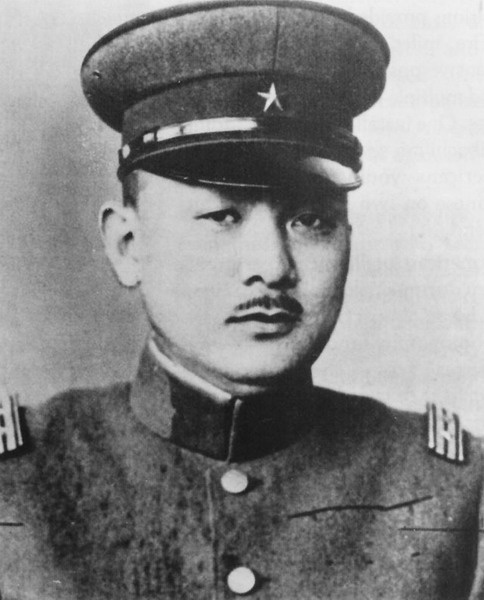
My thanks to the base historian and our Marine guide who educated me on the history which I just shared with you all (and provided the reference material from which to draw upon).
The next entry will discuss our trip to this historic island.
–Jim
A day at Haputo beach
Yesterday, we went back to one of our favorite beaches on Guam, Haputo Beach. It’s on one of the Navy bases on the island, so that limits who has access. That also means that there’s often little or no crowd. Yesterday, we were fortunate and had it to ourselves most of the time.
It’s a short hike to get from where one parks down to the beach. Since we like to hike, that was a bonus for us. 🙂
This is the view of Haputo Bay from where we started. It looks like it’s a long way, but only take about 10-15 minutes to get there.
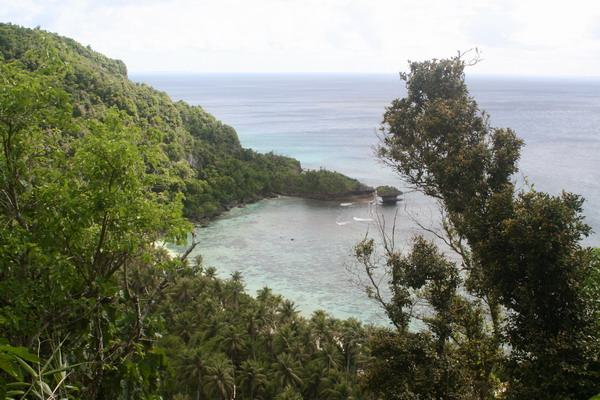
It’s a well defined trail (there are even some old stairs to take you down the steep hill). Here’s Anna on the trail.
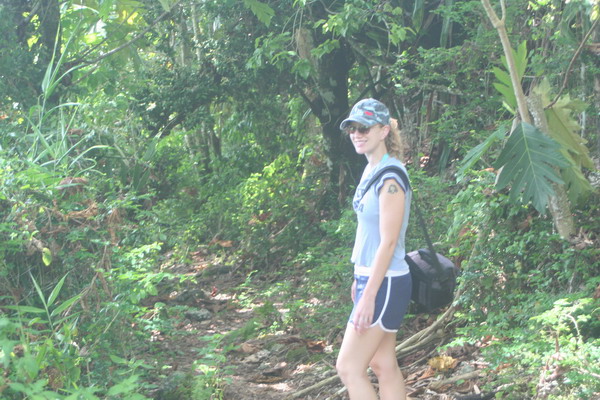
You can see the massive crowds we had to fight when we got down to the beach.
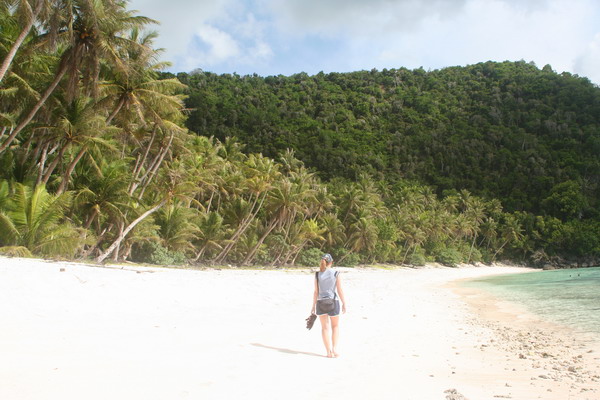
First thing we decided to do was lay out and soak up the sun. The wind was blowing, so it kept things *somewhat* cool.
Here is the view that we had from the sand.
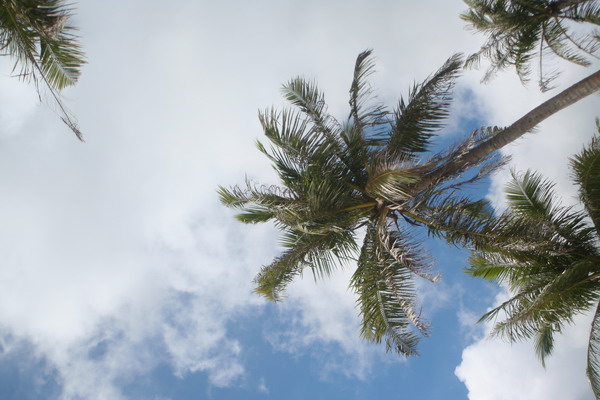
After a while, we decided to get in the water.
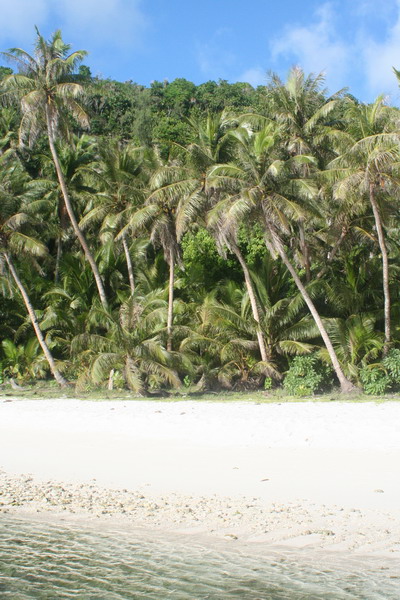
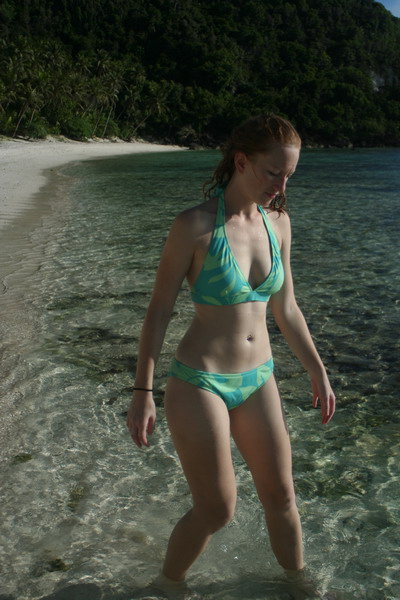
Since the camera is not waterproof, we took it back up the beach, then back to the water for a little open water swim. This time of year, the waves are very calm, so we could swim through a cut in the barrier reef to get to the far side of the reef. There, the water is deep, crystal clear and teeming with life. We swam the length of the bay, got out and hiked back. A good workout, with a great view.
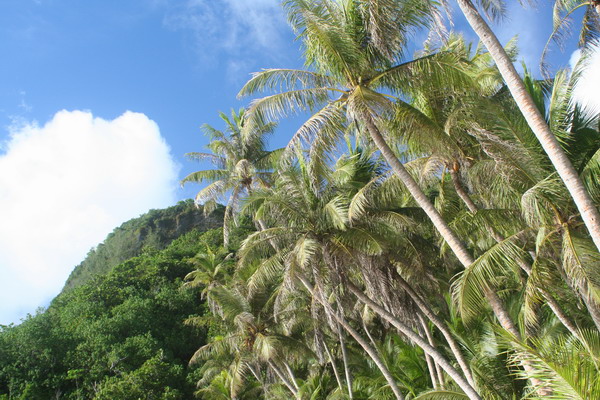
Then, we packed our gear up and headed back up the hill. We had a dinner to go to that night.
So, until the next adventure…
–Jim
The Land Down Under in 2005 — Part 2
When we arrived in Sydney, we wasted no time in exploring the city. Fortunately, our hotel was right downtown and it’s very easy to navigate around.
We went to the harbour bridge tower to get a better vantage point of the area. Here is one of the most famous landmarks in the world, the Sydney Opera House.
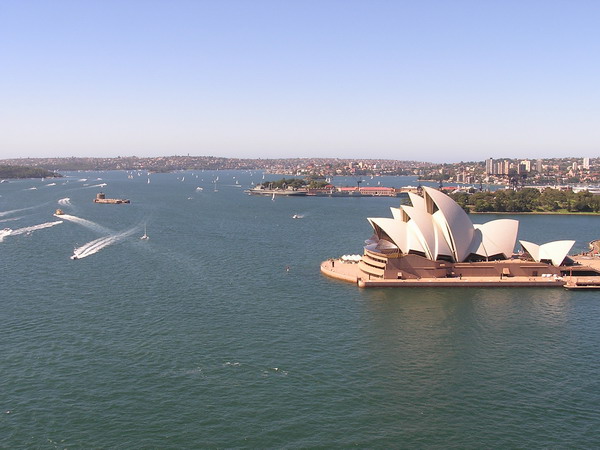
Next to the opera house is a place called Circular Quay (pronounced Circular “Key”). It is the harbour that connects downtown with the outer regions of Sydney by water.
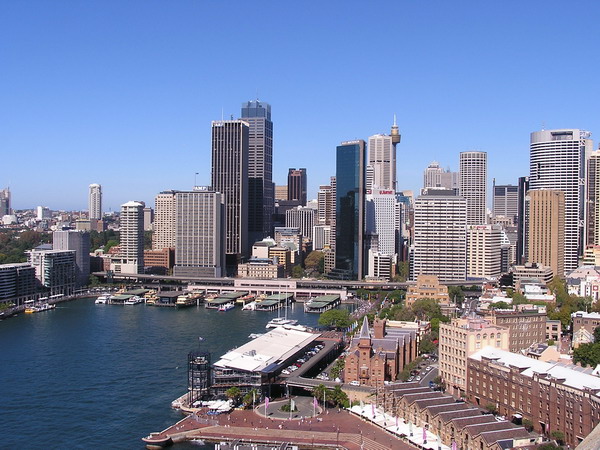
Here is Anna and I on the harbour bridge tower.
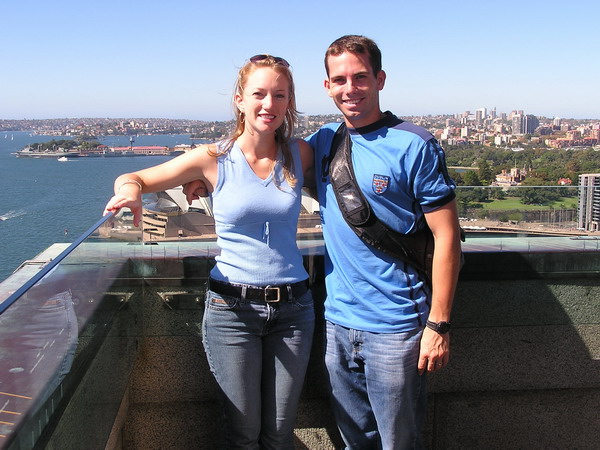
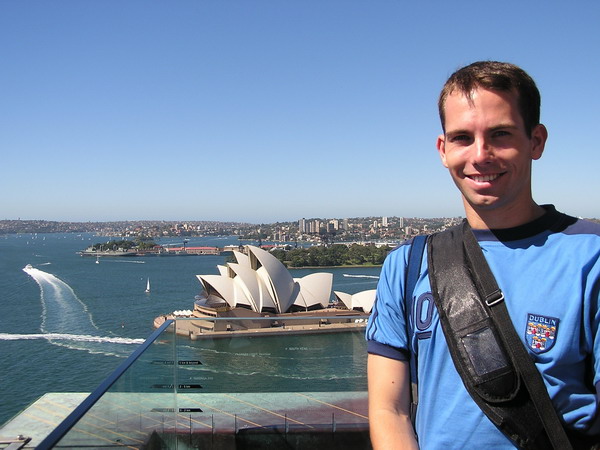
We heard that one of the best things to do (if you’re a little adventurous) is to climb the harbour bridge. This is true and we enjoyed doing it, but it was VERY expensive. If you go and are on a budget, that is one you can skip. Here’s a picture of the bridge. If you look closely, you can see groups of people climbing up the arch on the outside. Perhaps some people feel this is thrilling, but quite honestly, Anna and I were a little disappointed. The best view from the top was only slightly better than from the observation post and you couldn’t even bring your camera with you. Oh well, we’re glad we did it, just wish it were a little less expensive.
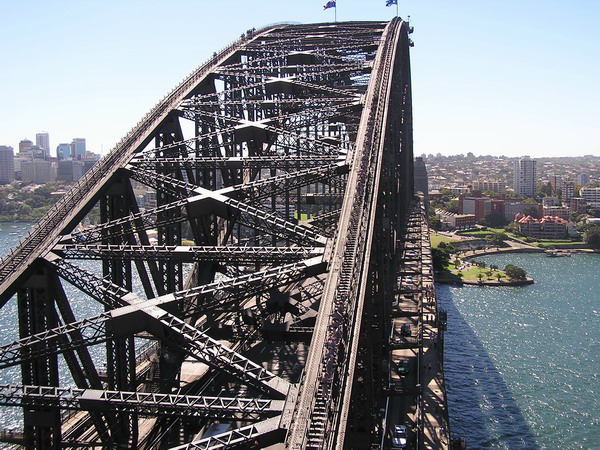
I really liked the arches on the opera house.
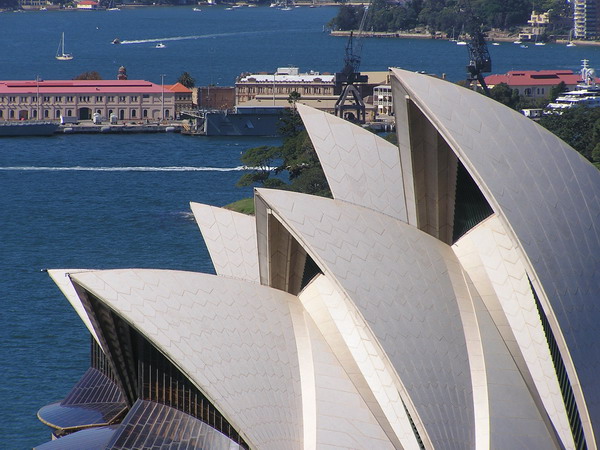
Another destination on our itinerary was Bondi Beach, one of the most famous beaches in the world. Even though the weather wasn’t the best, there were still lots of people out to take in the sun, see and be seen, and of course, surf.
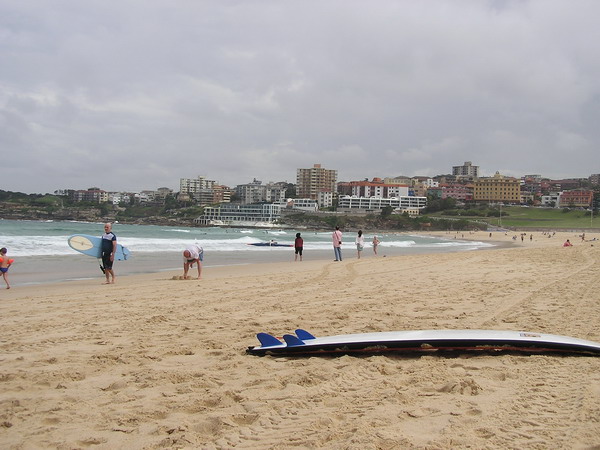
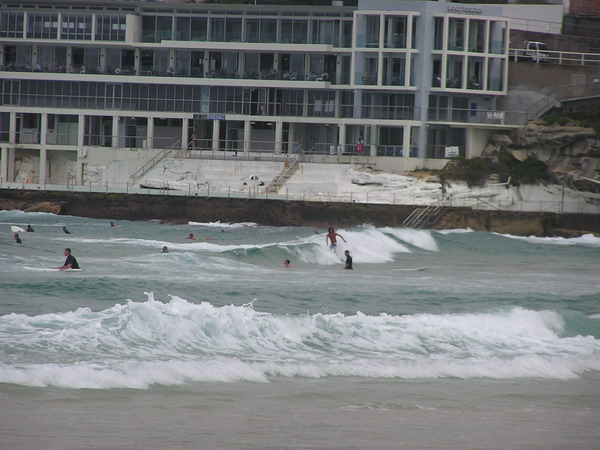
Here’s what Sydney Harbour looks like from the water coming back in from our day at Bondi.
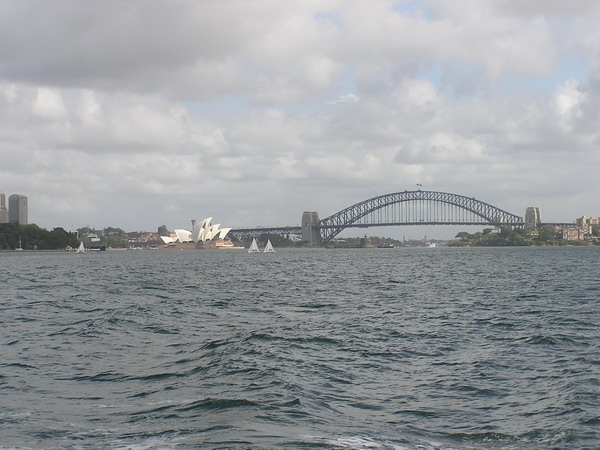
To continue with the beach theme we found, we later headed over to Manly Beach. The weather was nicer, so we took a stroll through the area. Needless to say, it was beautiful.
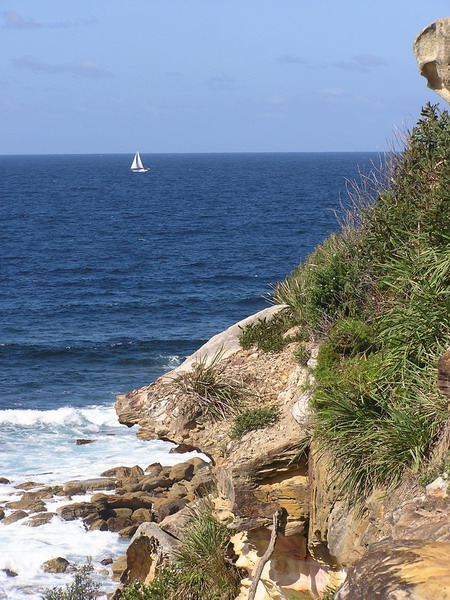
Another activity we simply had to do was see a show in the opera house. While there wasn’t an “opera” to hear, we did get to go see a very nice classical ballet. The acoustics are just about perfect.
Here’s are the sights that greeted us when we were done with the show.
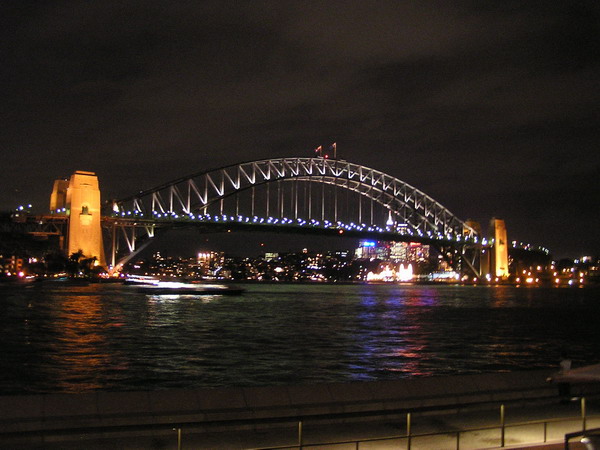
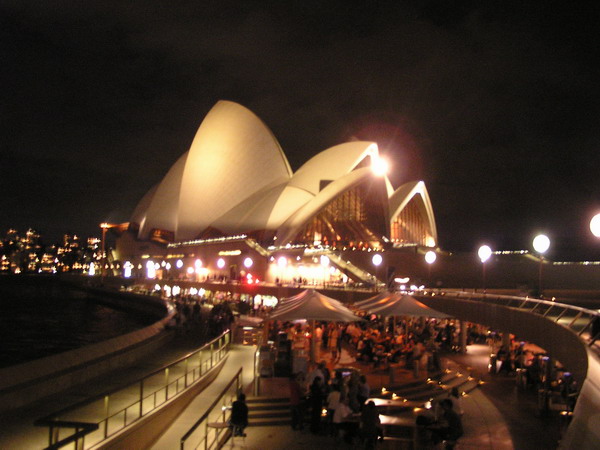
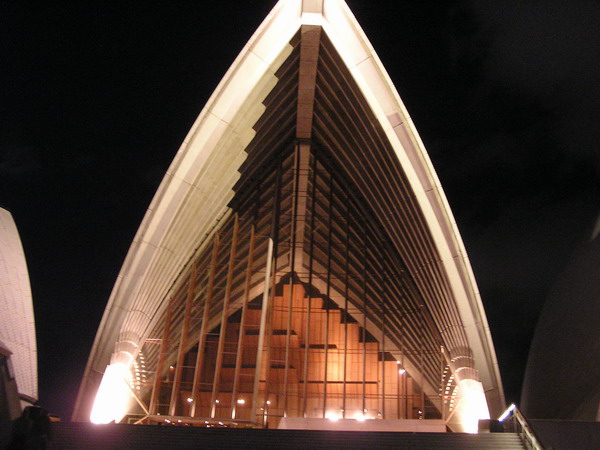
We were also able to get outside Sydney and explore the area a little. We went to another wildlife sanctuary (since we didn’t get enough with the stop at Billabong in Townsville).
This cassowary (found in the far north of Australia) is a very unique looking creature.
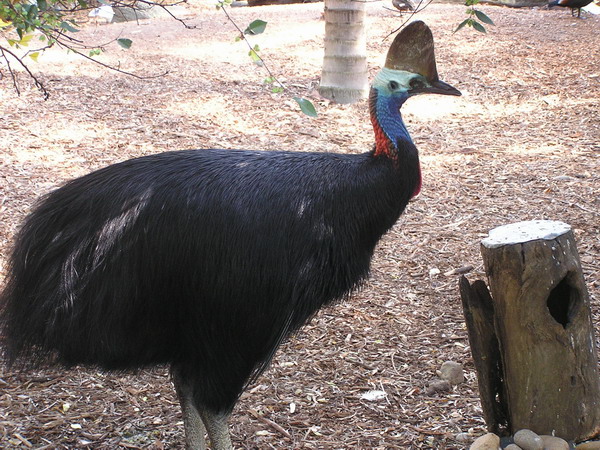
My turn to hold the snake.
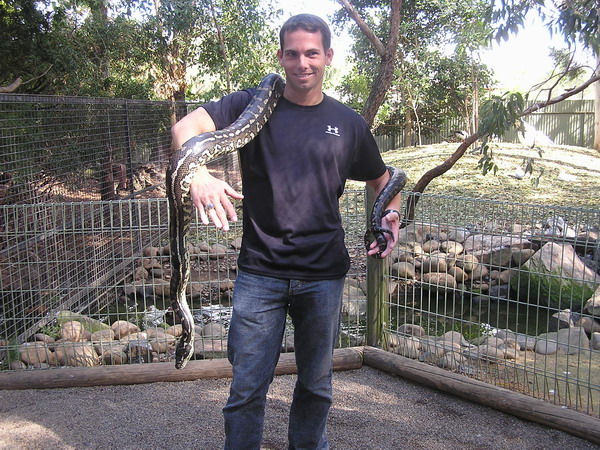
Of course, there were more koalas.

The Kookaburra (seen here, below) has a very unique call. It’s like a loud, eerily human sounding laughter.
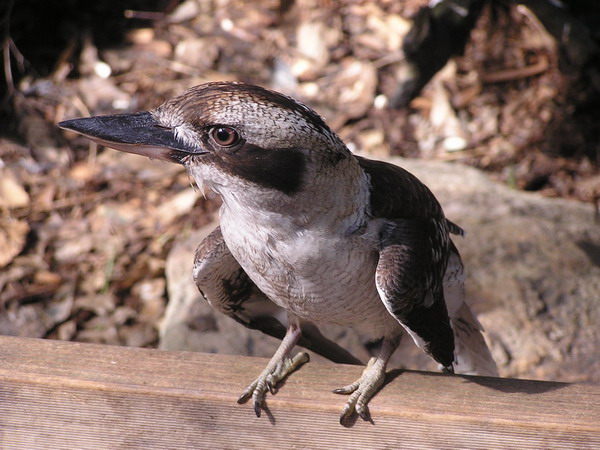
Here’s yet another very unique bird native to Australia, the Tawny Frogmouth. It’s aptly named and the picture doesn’t do it justice, but it’s beak and mouth looks very similar to a frog’s.
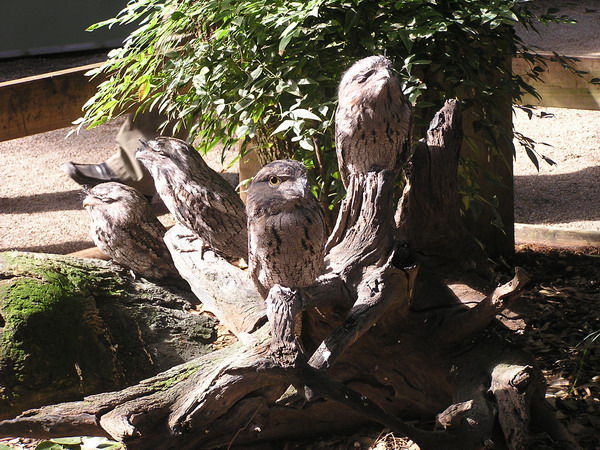
Here are the Frogmouth and Kookaburra together.
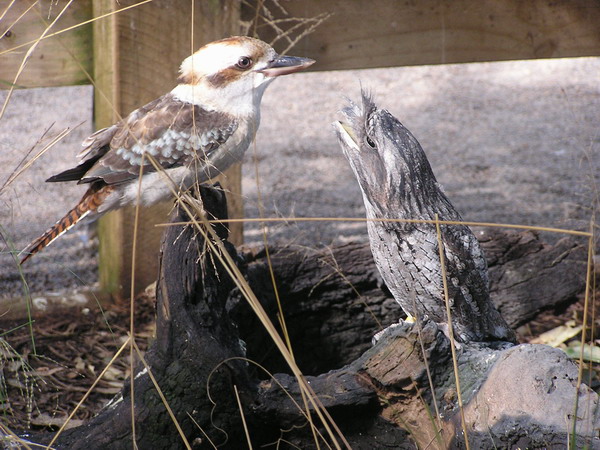
These amorous wallabies were adorable. They are in the kangaroo family, but smaller.
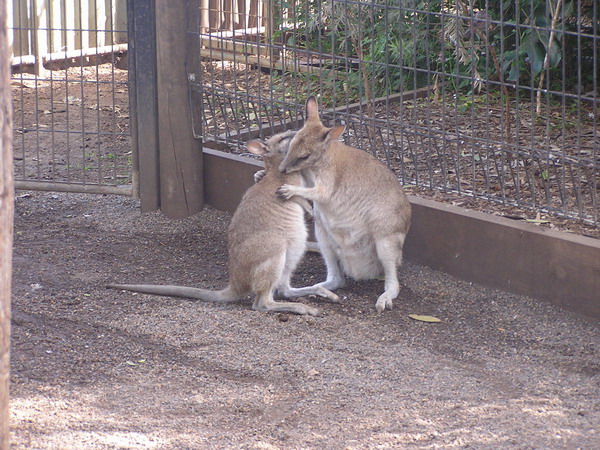
Here’s another wombat. Did you know that they are marsupials that take up to 14 days to digest their food?? Gives new meaning to the idea of a slow metabolism.
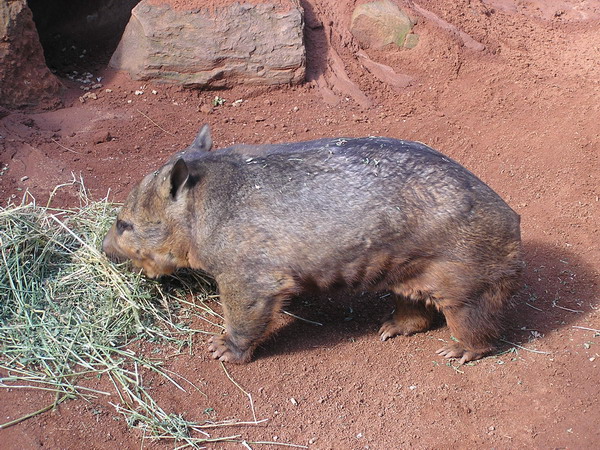
One of the few species of penguin found outside Antarctica is the Fairy Penguin (also known as the Little Penguin). It’s only about 16 inches high and a little over 2 pounds when fully grown.

OK, so I have no idea what type of bird this is, only that it’s very pretty. If you recognize it, please post a comment and let me know. 🙂
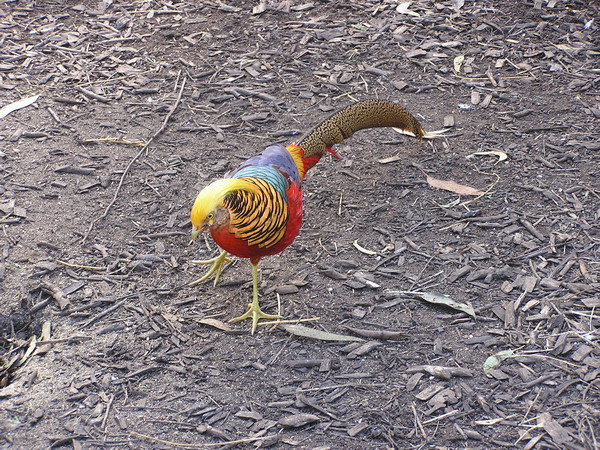
Here’s a cockatoo.
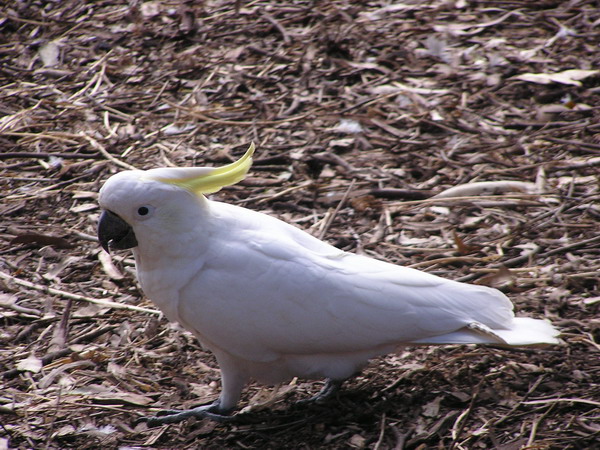
After we finished playing with all the animals, we continued on to the Blue Mountains. We went to visit the most famous landmark, the Three Sisters. They tower over Jamison Valley and are named: Meehni, Wimlah, and Gunnedoo. Indigenous Australian (aboriginal) Dreamtime legend says that three sisters fell in love with three men from a neighboring tribe, but the marriage was forbidden by tribal law. A battle ensued, and the sisters were turned to stone by a witch doctor to protect them. Unfortunately, he was killed in the fighting and no one else could turn them back.
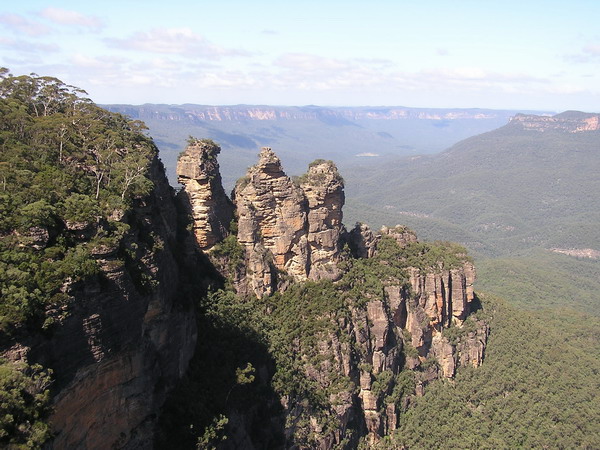
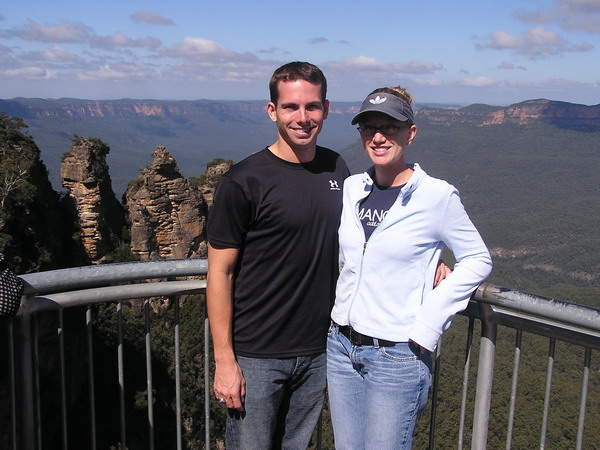
Here’s a view of the valley. The Blue Mountains, aren’t really mountains in the true sense of the word. They are sandstone plateaus that have been eroded to create these spectacular valleys.
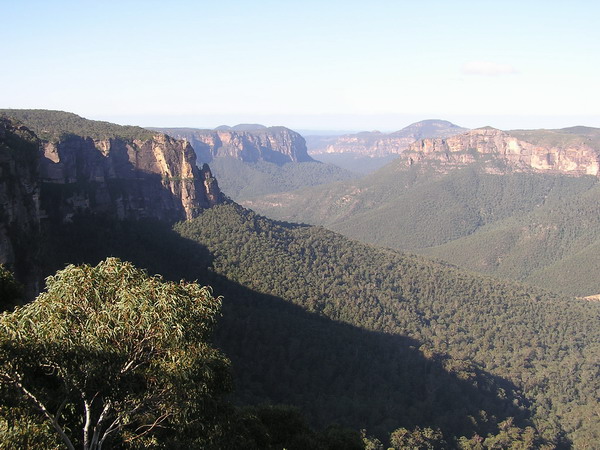
The final picture from our trip to the land down under is a rivercat. These nimble water craft took us rapidly back to Circular Quay.
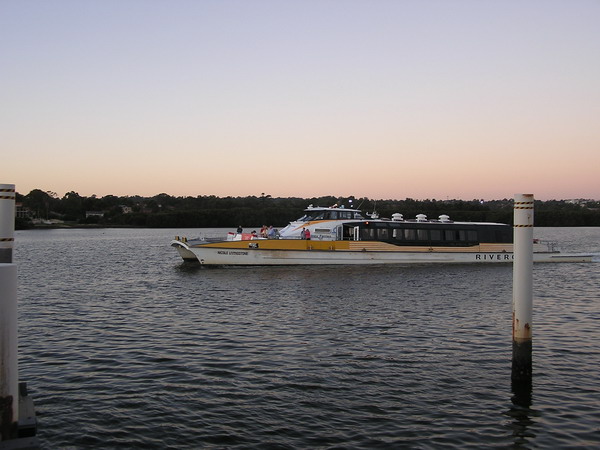
That concluded 2 wonderful weeks in Australia. We’d love to go back right now. Unfortunately, it will be a little while before we make it back. However, until then, the memories and these pictures will have to suffice.
So, until the next adventure…
–Jim
The Land Down Under in 2005 — Part 1
Back in 2005, Anna and I took a trip to the land down under. Since we lived in Guam, it was a pretty short trip. We simply HAD to go because Anna had spent a year in a small city in Northeast Australia called Townsville. So, we decided to take two weeks and visit the towns of Cairns and Townsville for the first week, and Sydney for the second.
Our journey began in the northern tourist mecca of Cairns (pronounced Cannes … like “cans” of soup). It is the only destination in Australia that is a direct flight from Guam and only a 3 hour plane ride.
Australia is a country that is perhaps as diverse as the US. In the north, there are lush tropical rainforests, temperate mountains in the southeast, and arid desert in the center.
Here is a picture of us taking the gondola into the Daintree National Rainforest.
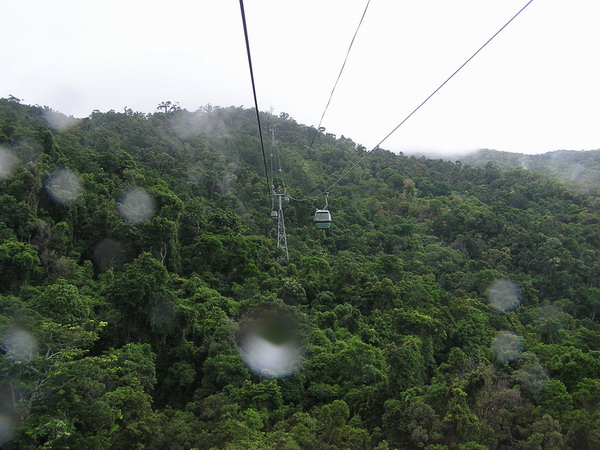
We spent the day exploring the forest and the little village at the top of the mountain, Kuranda Cultural Rainforest Village.
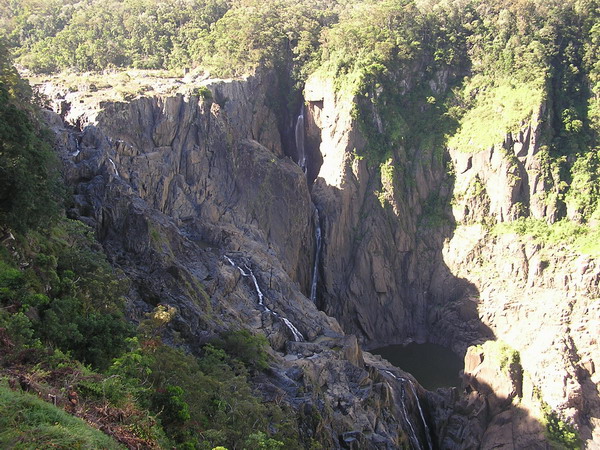
To come back down we opted for a train ride.
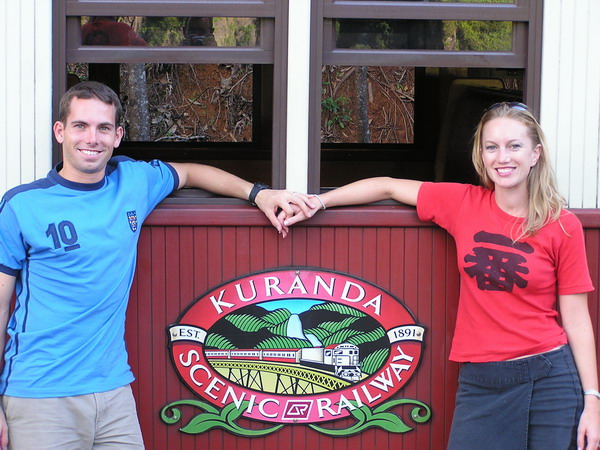
Anna enjoying the landscape slide by:
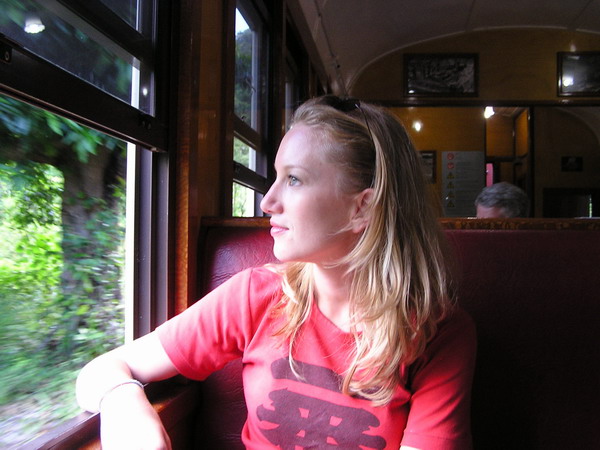
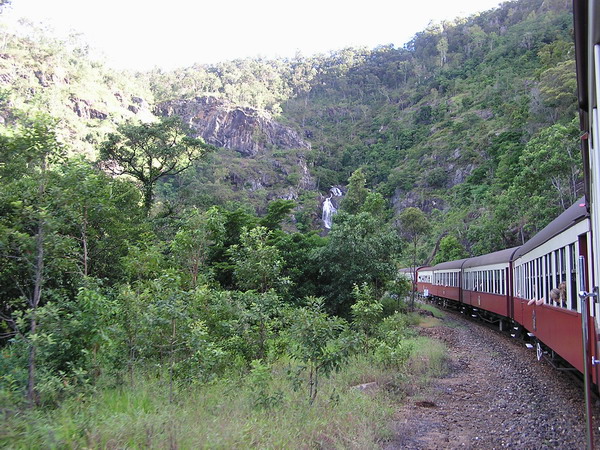
Back in Townsville, we went to the Billabong wildlife sanctuary. It was like a very elaborate petting zoo in the US. Most animals were roaming free and it was great to be able to interact with them. In fact, I even got to hold this wombat in my lap.
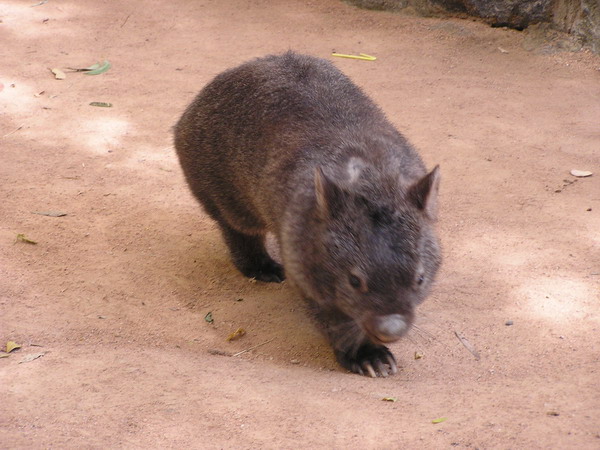
Of course, there were plenty of koalas there to see (and even some to hold!). It’s interesting to note that early European settlers called the Koala the “Native Bear” of Australia. This is a misconception. A koala is a marsupial that is not a bear of any kind. So, if you go, please don’t call them koala bears. 🙂
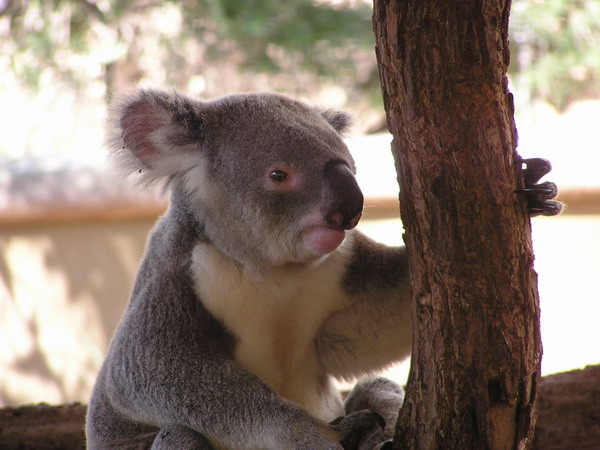
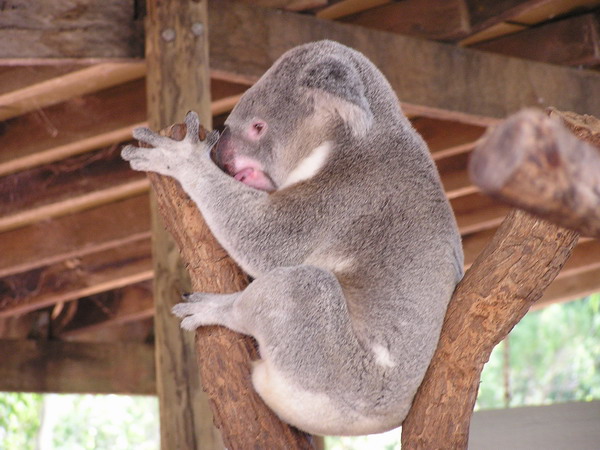
This is one of Anna’s long-time friends that we met with, Janine.
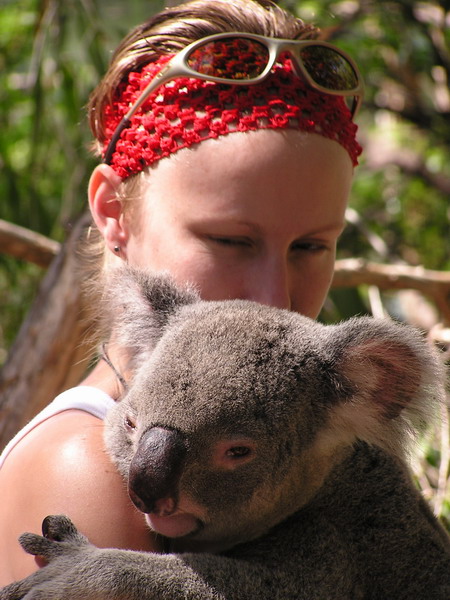
Another picture of Janine holding a very affable koala.
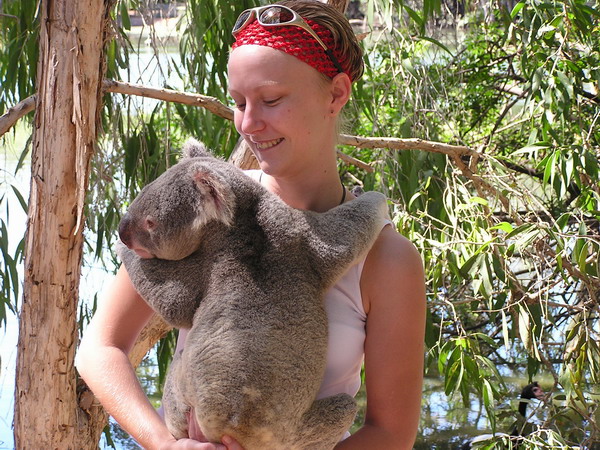
Here’s another very common marsupial in Australia, the kangaroo. I think combined with the koala, these are the quintessential or signature animals of Australia, at least from an American perspective. Oh, you’ll note that the joey (young ‘roo) is still in it’s mother’s pouch.
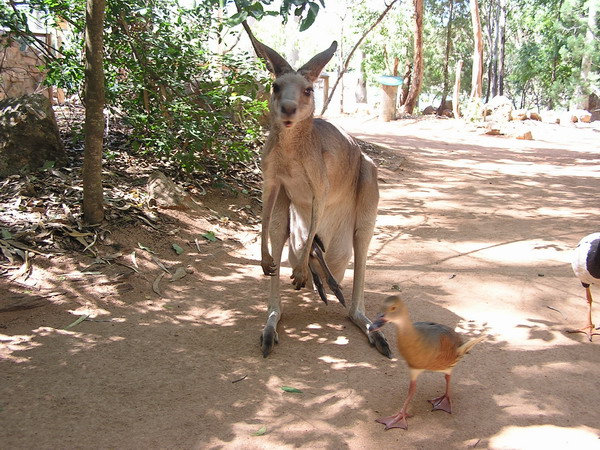
Yes, we even got to feed them. It kind of reminded me of feeding a deer. There is some similarity in the way deer and kangaroos look, plus they are both very shy and retiring by nature.
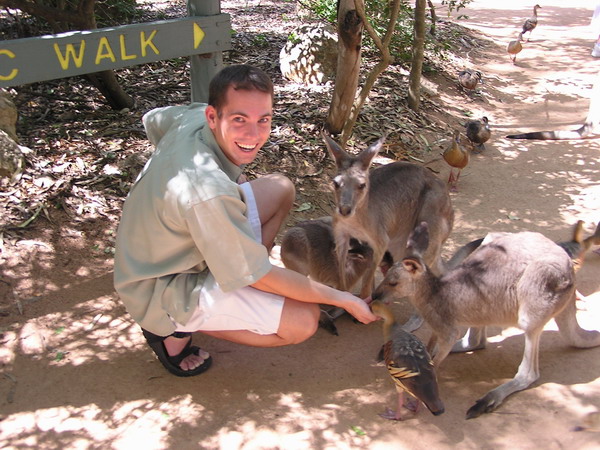
This little croc wasn’t quite as cuddly…
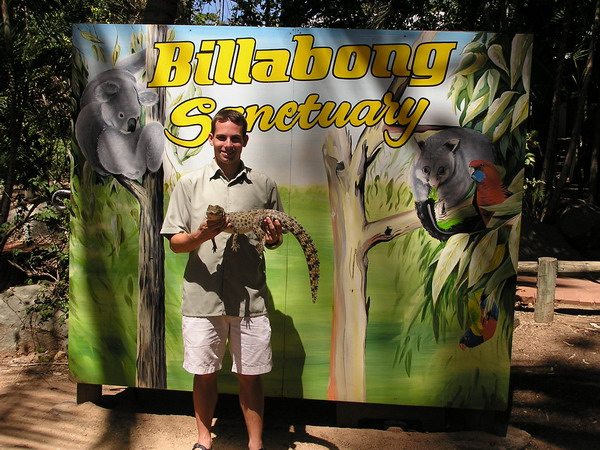
Another interesting fact is that 8 of the world’s 10 deadliest snakes live in Australia. So, if you see one in the wild, there’s a good chance it’s poisonous. Fortunately, this was a python and not dangerous.
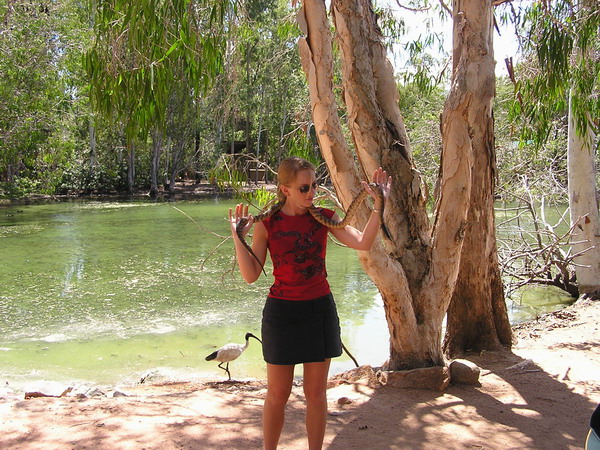
I wasn’t about to hold THIS crocodile…
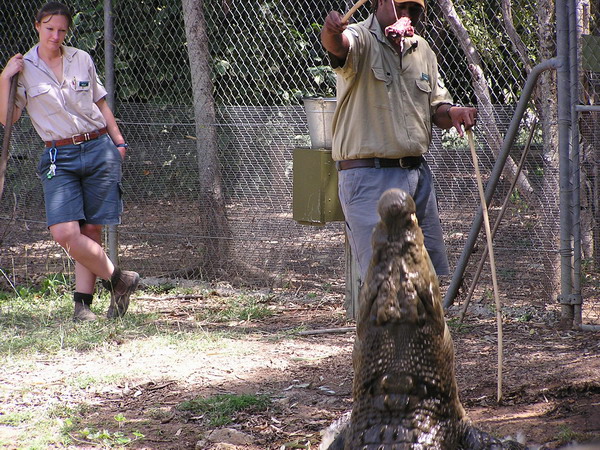
Later that week, we took a ferry out to Magnetic Island, just off shore from Townsville. Here is Anna and I as we hiked from one side to the other:
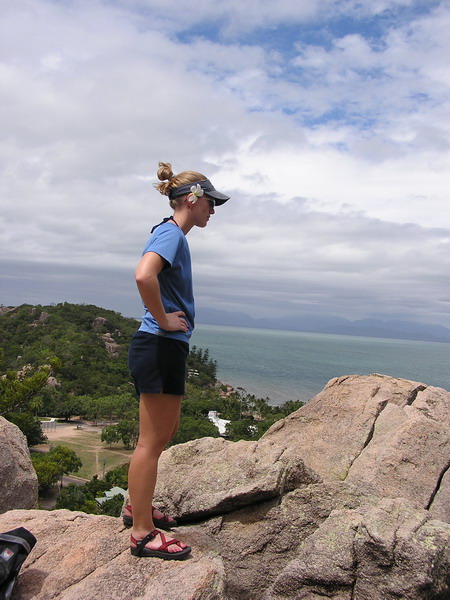
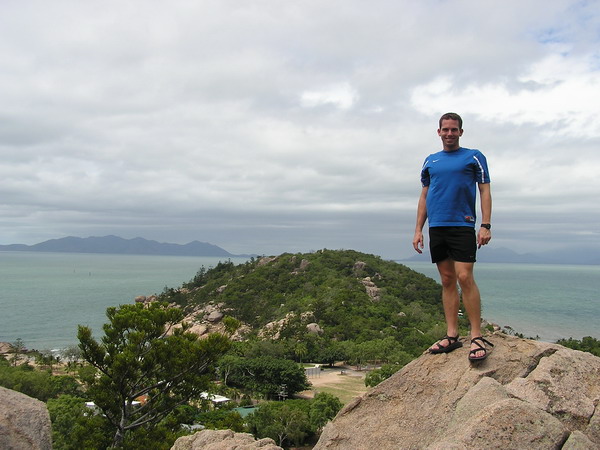
We even tried the phone booths to call back to the States and talk to family.
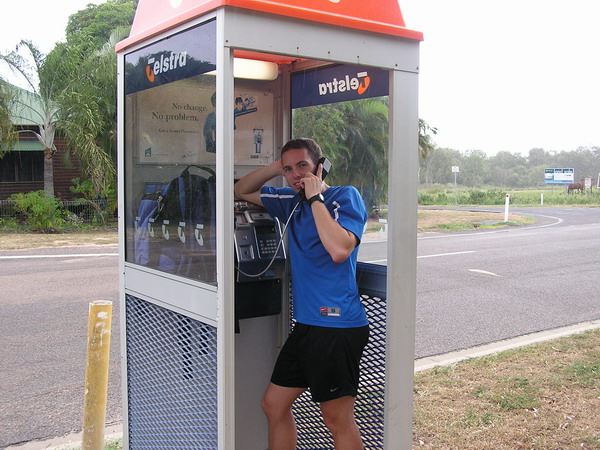
Back in Townsville again, Janine, Anna and I went to the beach. As you can see, the water is a bit different here than in Guam. It also has a barrier to keep the sharks and jellies (jellyfish) away. A bit constraining, but still fun to play in the water.
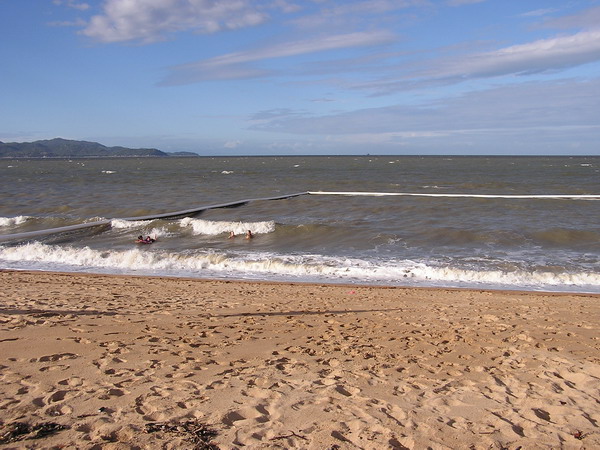
There is some truth to the belief that everyone surfs in Australia. The lifeguards certainly do.
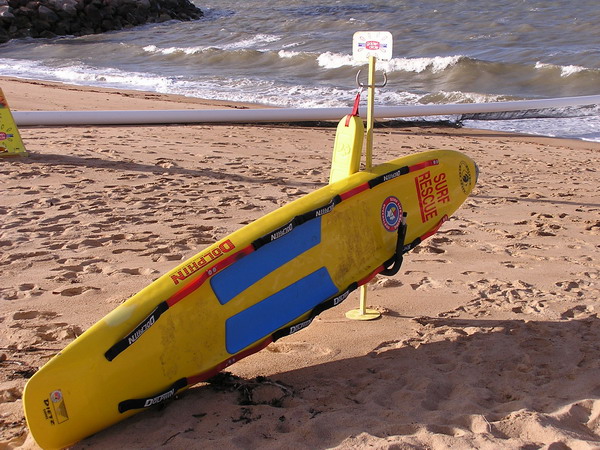
Anna and Janine, taking in the sun.
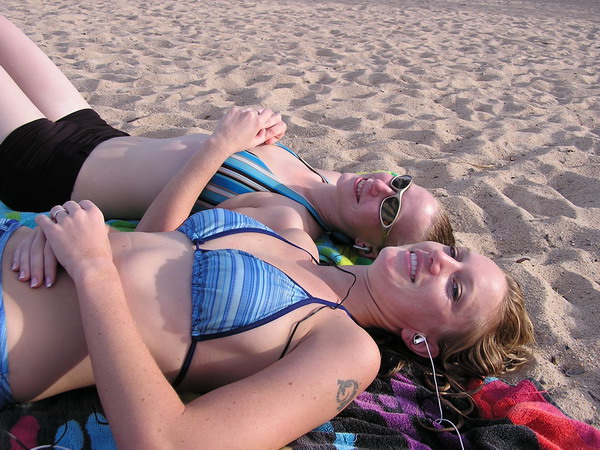
Our last night in Townsville, Anna’s Australian “Mum and Dad” (that she lived with when she was here before), took us out to a very nice dinner. I was glad to have finally met them, after I heard so much about them for so long. They were every bit as nice and welcoming as Anna said they were. That is true for most every Aussie we met. A very warm, open, and welcoming culture.
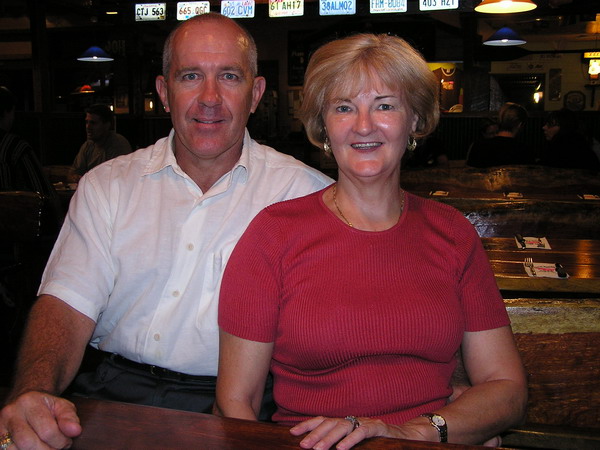
Then we sadly had to part ways and head back to Cairns for another day. This time, we decided to take a trip out to the Great Barrier Reef (which take an hour and a half by boat in most places).
We went to a place called Green Island. Fortunately, there was a very speedy ferry to make the trip in only about 45 min.
While out there, we decided to see how it was to dive and snorkel. It was nice, but surprisingly, didn’t seem a whole lot better than diving in Guam. I am sure there are many places that are amazing to dive on the Great Barrier Reef(it is after all over 2,000 kilometers long), but our choice was less than amazing. However, it was a great day, and while we didn’t see any sharks (as I was hoping), we did run into a number of sea turtles, which are always fun to watch.
So, that concluded out time in Northern Australia. We hopped a domestic flight down to Sydney and began the second week, in what has become one of our top 5 favorite cities in the world.
–Jim
Island Reggae Concert
Last night Anna and I went to an outdoor concert here on Guam. Even though Guam has the population of a small to medium sized city in the mainland U.S.A. (160,000), there are a number of big name bands that come through. This is mostly thanks for the military’s support functions to sponsor their appearances. This was true yesterday as well. The Navy MWR (Morale, Welfare and Recreation) brought in a band called Soldier’s of Jah’s Army (or SOJA for short). They are a reggae band from the East Coast. You may wonder who Jah is, well, it’s the name commonly used for God in the religious Rastafari movement. I think they use marijuana for their medium to commune with Jah … at least that’s how it sounded last night. Certainly an interesting experience watching this concert.
Also, reggae music is the theme of the island. Every week when there are large fiestas (parties), the music playing is reggae. So, it was, if nothing else, apropos for the island of Guam.
Guam is a finicky place. It goes from seemingly cool and torrential downpours to oven hot in a matter of minutes. These umbrellas in the crowd were used for both rain and sun. It was HOT!
Here are some pictures to show you what I am talking about:
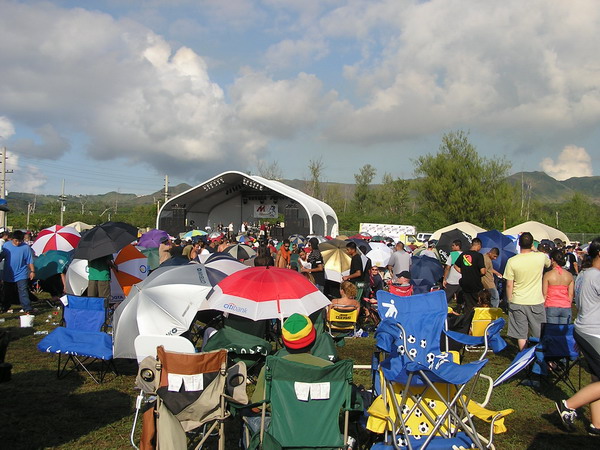
Here is one of the opening acts, a couple local radio personalities. Not my sense of humor but many people here find them amusing.
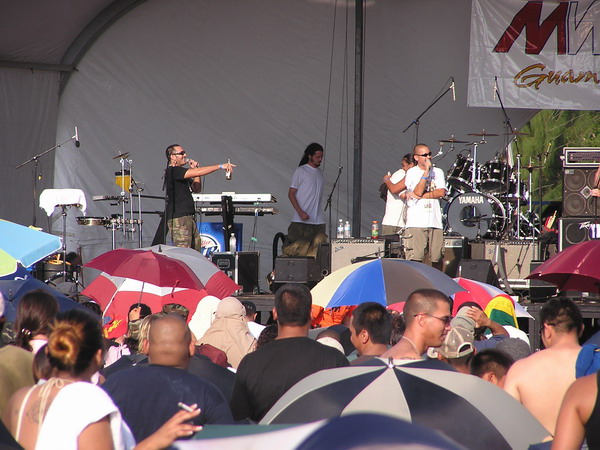
Here’s Anna and I sweltering in the heat and trying to find relief under the umbrella.
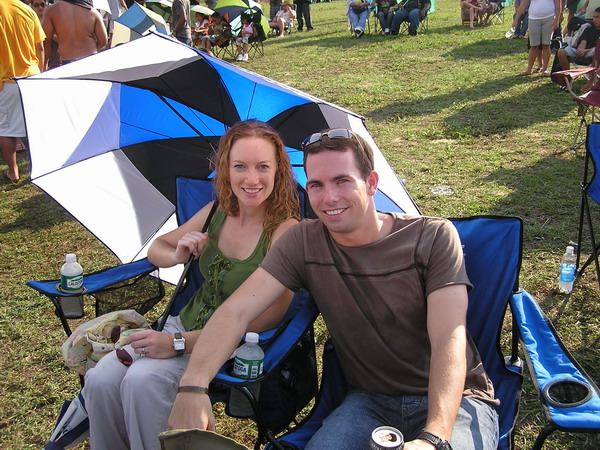
Our friend John:
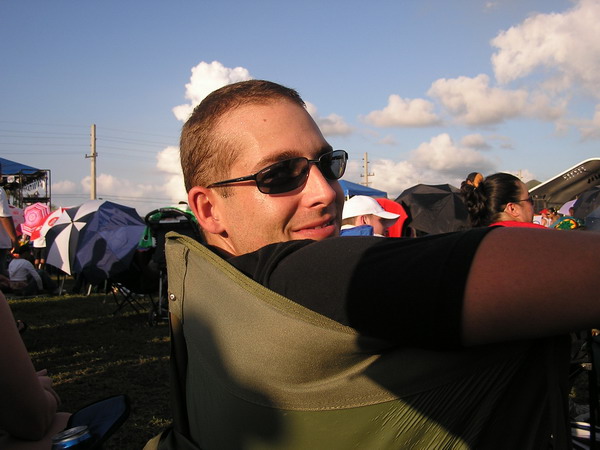
Carrie and Christy:
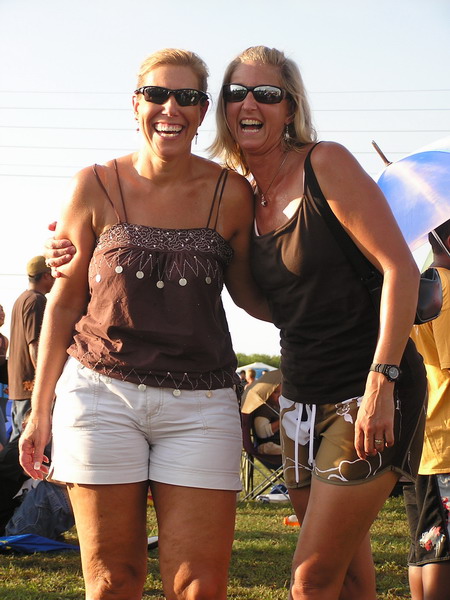
Hmmm … yes, here’s a person who has an interesting mix of religion, family and drugs.
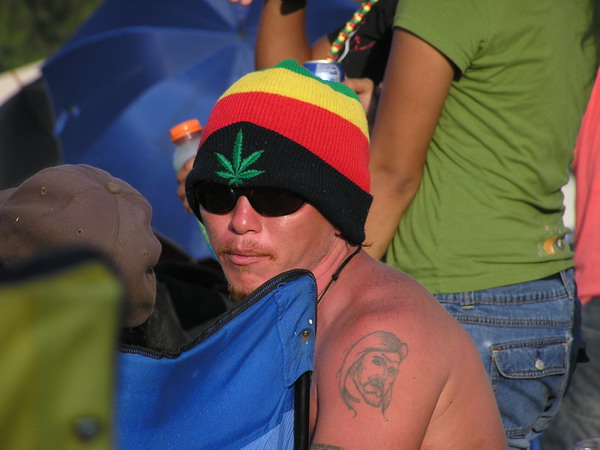
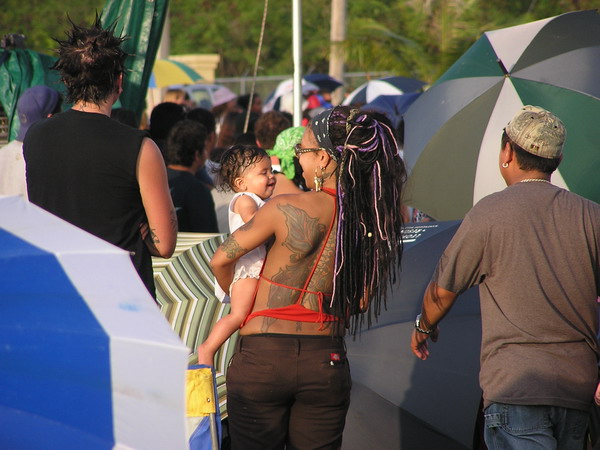
These guys are representative of the audience at large:
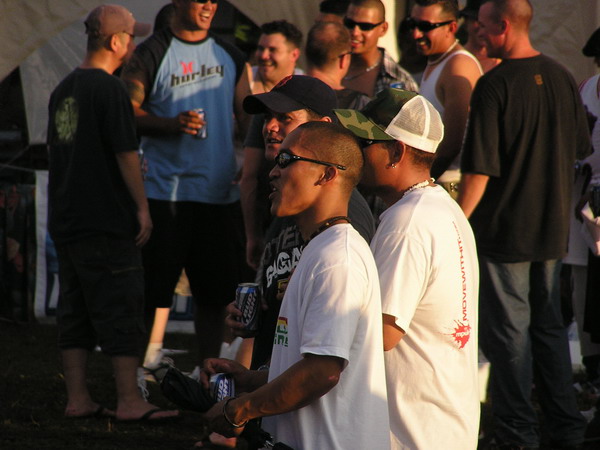
The MWR folks were giving away T shirts with this pneumatic launcher:
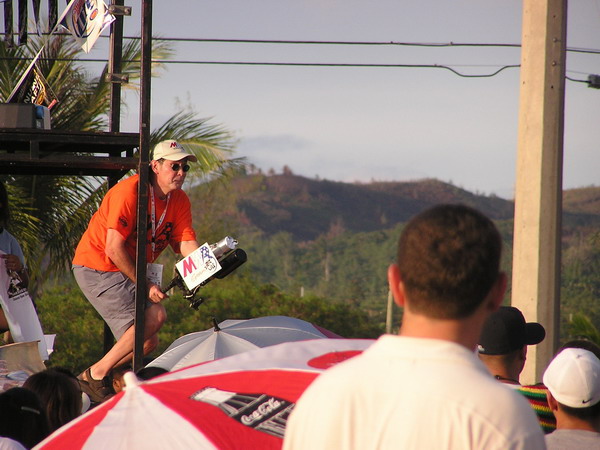
The Caribbean Jerk Chicken and his girlfriend were out as well.
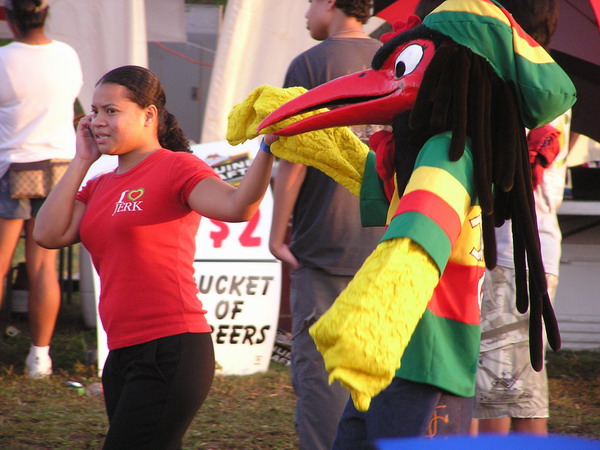
Finally, as the sun was setting and things cooled off, SOJA came out to perform.
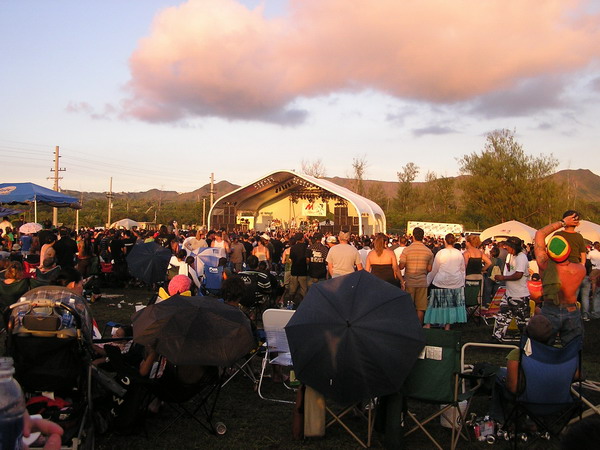
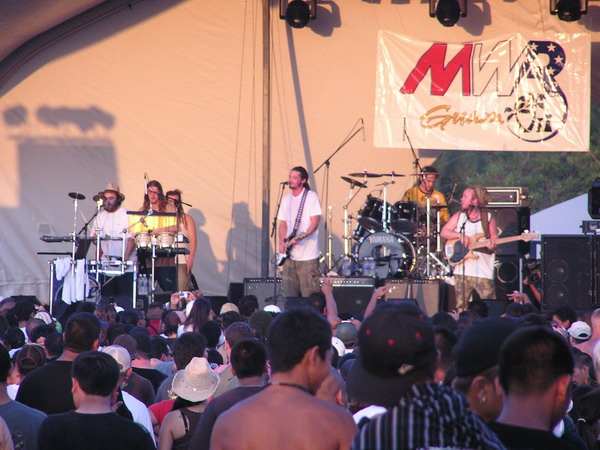
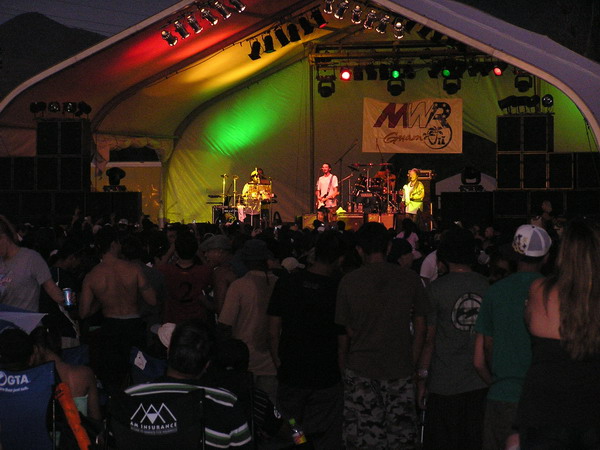
That concluded the concert. The music is pretty good, but we (our group at least) decided that the reggae music doesn’t translate well to a large concert. It’s good on the radio, or in small settings, but doesn’t have a lot of energy to sustain a large concert. It was an enjoyable concert nonetheless.
Feelin ayrie…
–Jim
Highest Mountain in the World
Well, this afternoon, in a matter of three hours, Anna and I conquered the tallest mountain in the world at a staggering height of just over 37,000 feet. Do you know what its name is?? No, it’s not Mt Everest, nor Mt Kilimanjaro. It’s called Mt Lam Lam.
🙂 OK, so only 1,331 feet are above sea level. The rest is underwater and goes down to the Marianas Trench (the deepest known place in the world). However, it’s the highest point in Guam.
It’s a deceptively challenging hike. Many people who try to summit Mt Lam Lam, get diverted the much easier (but only about 50′ lower) Mt Jumullong.
However, we made our way through the jungle and vast morass of spider webs…
When we go up to the top, there were some beautiful vistas of the island that greeted us. Here’s the view of Cocos Island to the south.
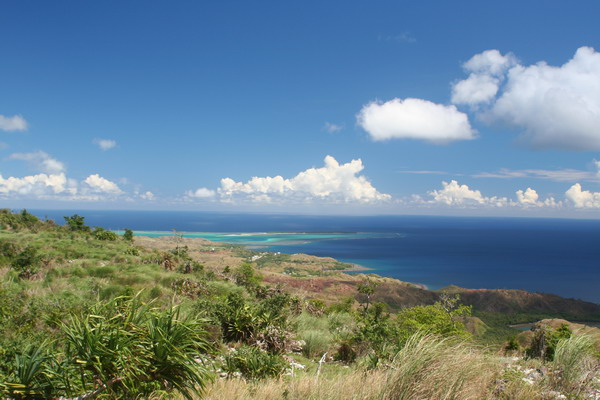
Here’s a small tropical shower out over the Pacific.
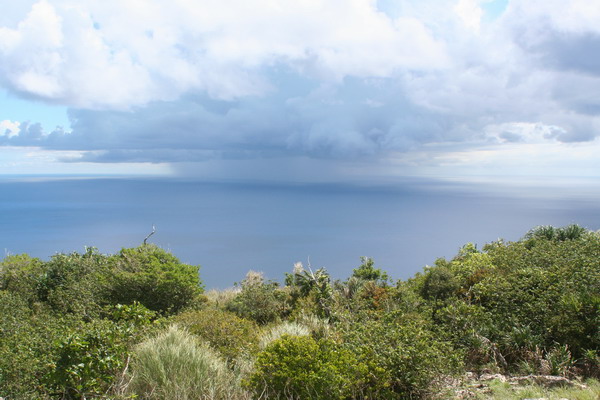
Here I am (almost) on top of the world!
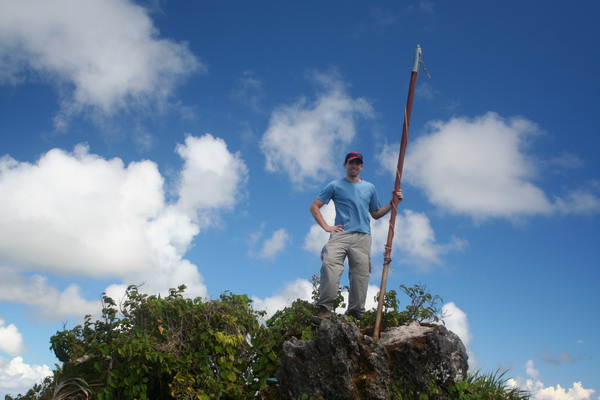
If only I could go up just a little more…
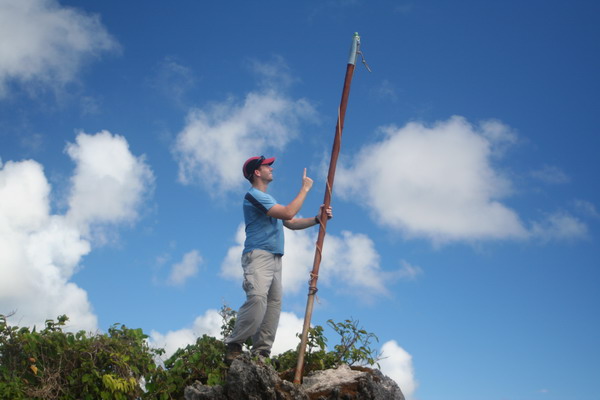
Of course as is our tradition, while we were up on top, we had to have a little picnic.
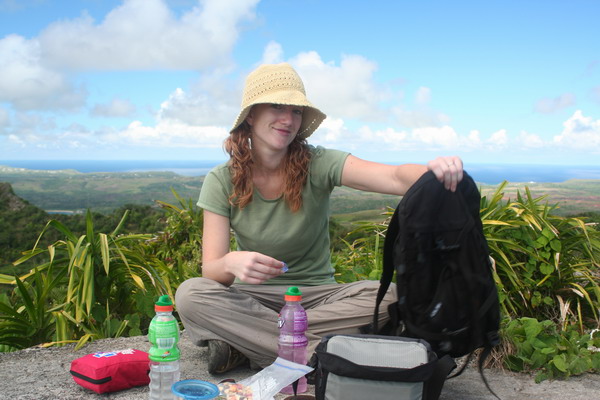
Another interesting perspective is to look north from Mt Lam Lam. If you look closely in this picture, you can see both sides of the island. It’s a unique location to get a feeling of just how small (or large) Guam really is. Although there is plenty of space and it certainly doesn’t feel small, it’s easy from this vantage point to get a feel for the layout of the island. For your reference, Guam is 212 square miles (or about three times larger than Washington D.C., or about a third the size of the Hawaiian island Oahu), and at the smallest only 3-4 miles wide (as this picture shows).
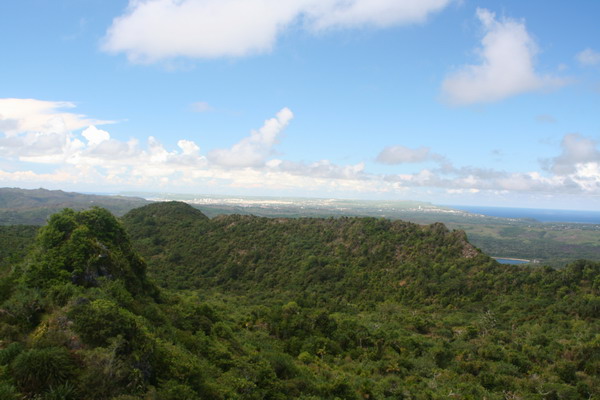
On the way down, we found this very nice perspective of Cetti Bay.
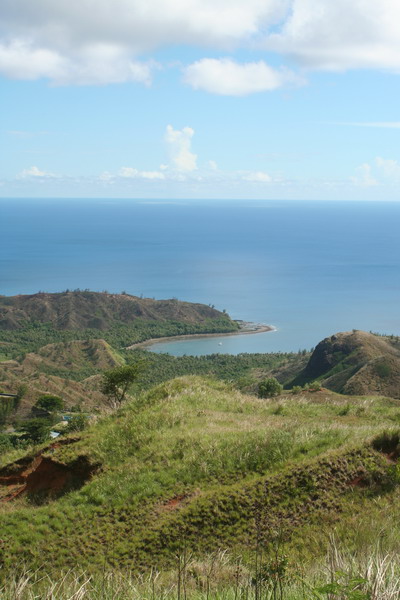
So, that concluded our hike up the towering Mt Lam Lam. A fun little hike, but be warned. It’s tougher than it looks! 🙂
Until the next adventure…
–Jim
Cocos Crossing
This Memorial Day weekend was the 16th annual Cocos Crossing. This is a chance for a couple hundred slightly masochistic people to get on a ferry way too early in the morning and ride two and a half miles out to Cocos Island off the southern coast of Guam. Then, get in the water and swim back to Guam. Perhaps I am doubly so, because it was the second year I did it. 🙂
Here’s the island and the approximate swim route.
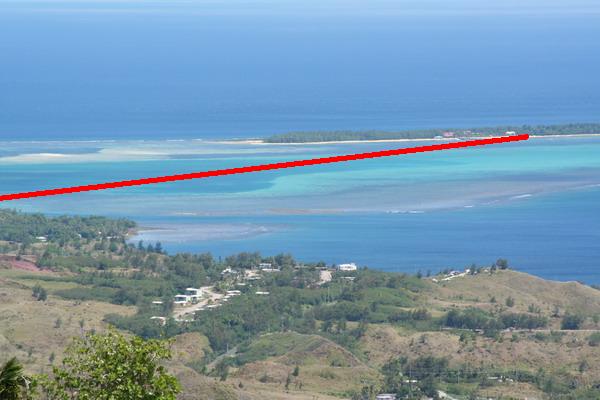
Anna stayed on the big island and hung out waiting for us to return. The winner made the trip in 42 minutes. He was a swimmer from Japan. I, on the other hand, took an hour and eight minutes to make the crossing. That’s a couple minutes faster than last year, so I was pleased. Especially since I hadn’t been in the water since April 1st at the Saipan X-Terra triathlon.
Here I am coming in and getting out of the water.
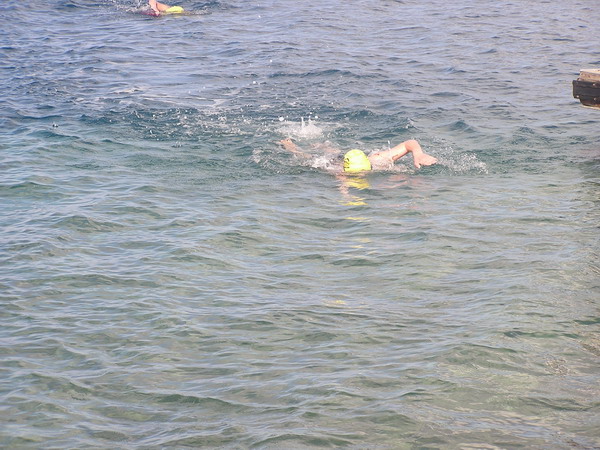
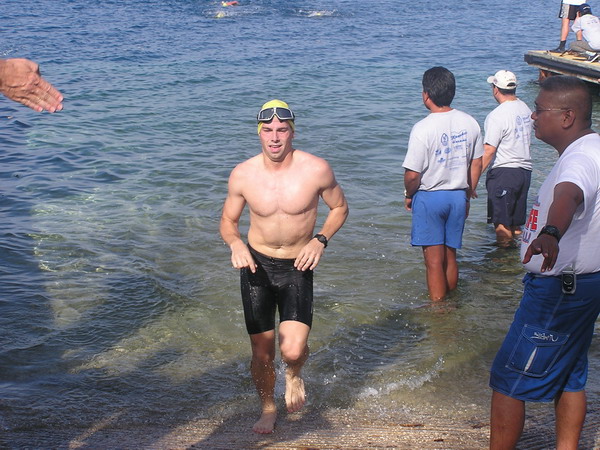
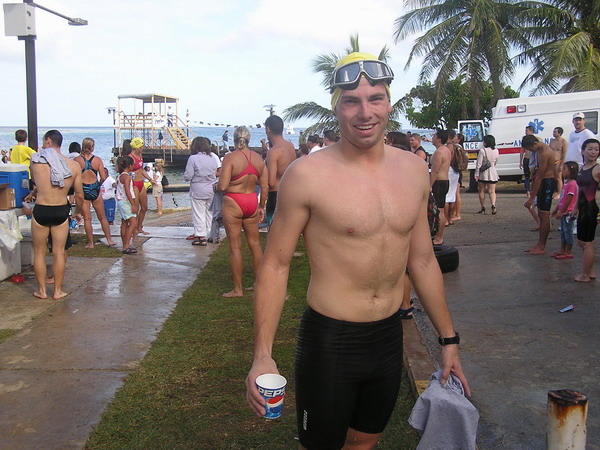
This year, we even had Miss Guam Tourism on hand to congratulate the finishers. Of course, Anna made me get a picture with the girl in the tiara. 🙂
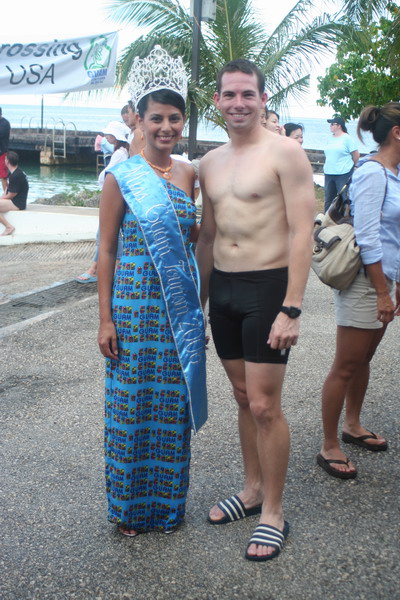
It was a fun race, and the really only issue was about 400 meters from the finish, I got a little jellyfish sting. Don’t worry, it was no worse than a bee sting and went away relatively quickly. 🙂
Here are a few of the ladies from the base who also did the swim.
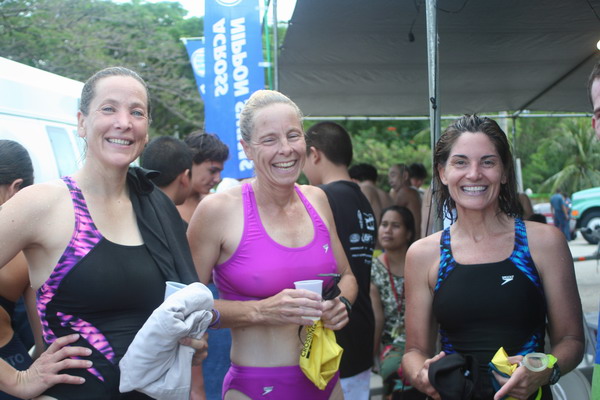
It was a good morning, and I didn’t feel bad at all having a large fried breakfast!
Until the next adventure…
–Jim
